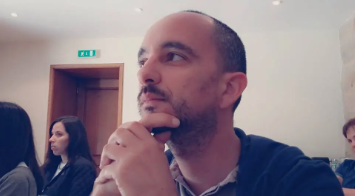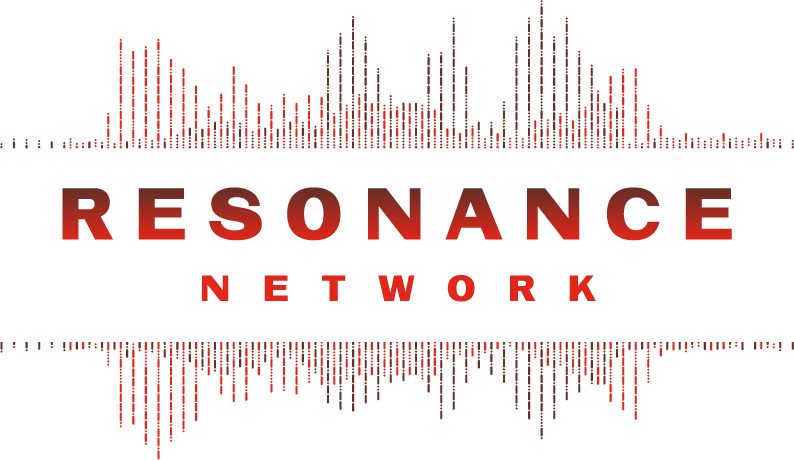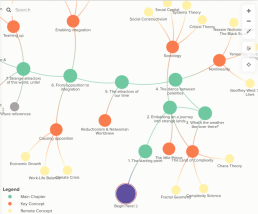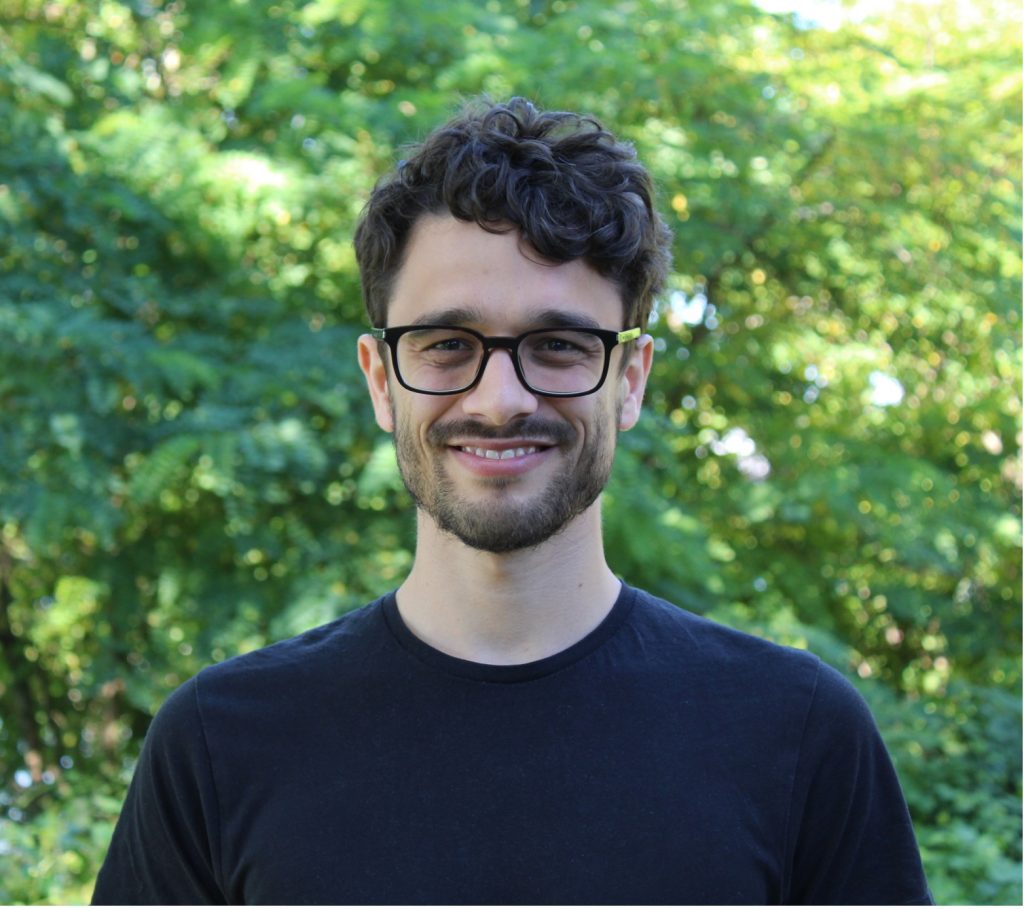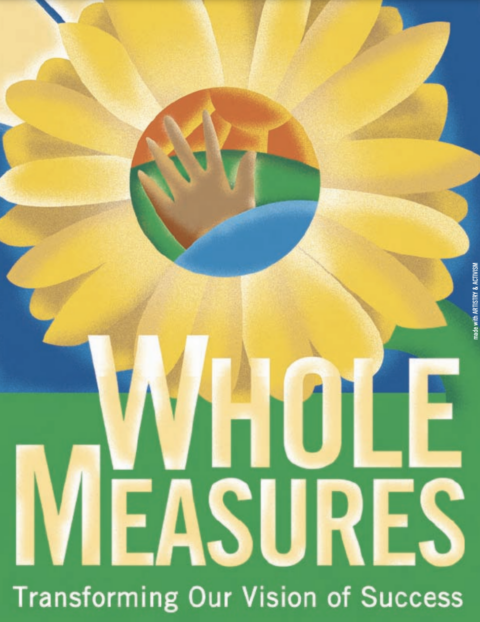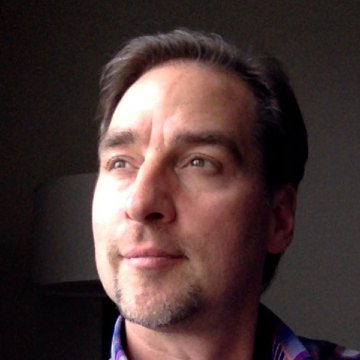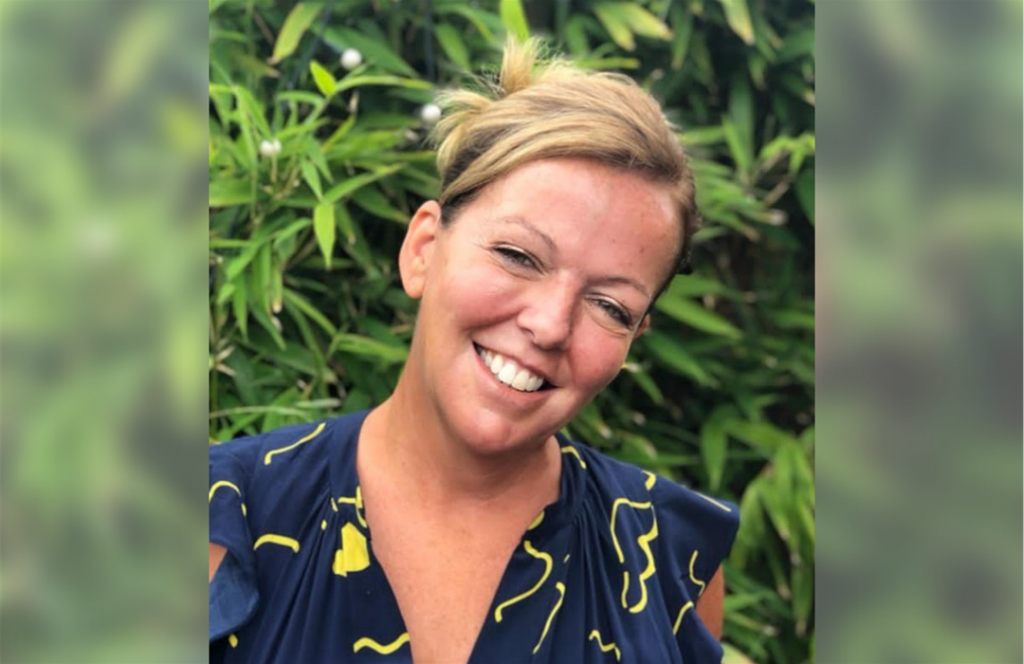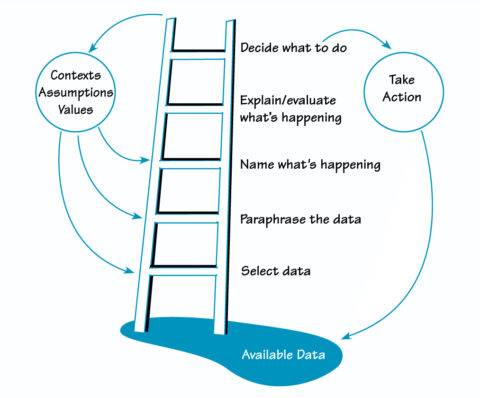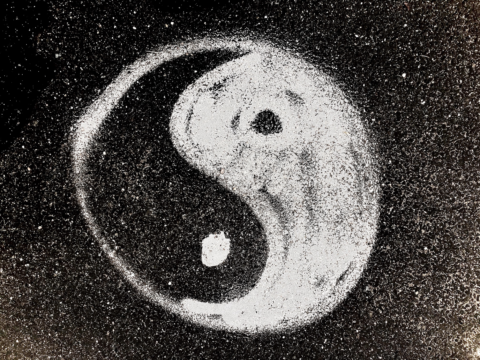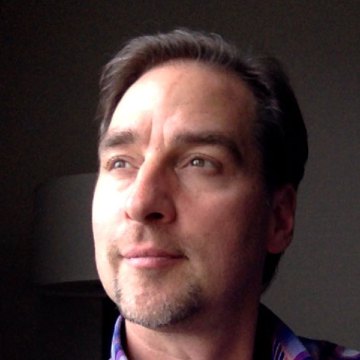MEASURING LOVE in the JOURNEY for JUSTICE
Below is the preface to this week's featured resource: Measuring Love in the Journey for Justice. Find the link to download this Brown paper at the end of this post.
MEASURING LOVE
Preface: A Sovereign Perspective
As this is a Brown—not white—Paper, we want to give some perspectives before you dig in. In a sovereign, self-determining perspective, we see Two Spirit people as sacred gifts. Children are treasured. Elders are respected and privileged. Womyn are beloved and respected and have power and voice. Fathers, sons, and boys are lifted up as the warriors, believers, and loyal friends that they are. Mothers, daughters, and girls are as valued as life itself, seen and treated as blessings. And all relations are sacred.
To be sovereign and free, our people need policies made of love, forgiveness, and connections.
As oppressed, exploited people of color in this work of social and racial justice, we have seen — and are seeing—children separated from their caregivers, caged in concentration camps. We are living in another era of the systemic denial of democratic civil rights. To be sovereign and free, our people need policies made of love, forgiveness, and connections. Our communities deserve health and educational equity; land and housing justice; economic independence; living wages (as in universal minimum income). Our people want restorative justice practices to replace punishment and lockup. Our communities want community organizing and advocacy, block by block. Our people need community controlled governance and accountability systems. We want civic leadership everywhere, as the right to vote goes with the rights to drive, assemble, drink, and travel.
This Brown Paper flips the script of what is acceptable as a “Paper” on its head. It is not a “formal,” research-based, finished product of the traditional type. It comes from the heart and is meant to be used—like love. It is meant to spark dialogue and provoke.
In it, we are asking ourselves, “Are we loving bravely enough?”
And “How much am I loving?” “What else I can do to be in community from a place of love?” and “How am I wielding power fused with love?”
These are the essential questions posed in our brown paper. We are excited to bring this out into the world to provoke, connect, and build with you.
We have so much to love. We love YOU because we know if you’re reading this paper, you know what it’s like to be powerless and not feel loved—and are working on bringing about more justice in the world.
We release our intentions into the universe. We want to know what your reactions are. We thank you for honoring us by your comments and discussion.
Spread your love. And, we know we are rising as one.

Download Measuring Love in the Journey for Justice HERE

Shiree Teng has worked in the social sector for 40+ years as a social and racial justice champion – as a front line organizer, network facilitator, capacity builder, grantmaker, and evaluator and learning partner. Shiree brings to her work a lifelong commitment to social change and a belief in the potential of groups of people coming together to create powerful solutions to entrenched social issues.
*After the Measuring Love Brown paper was released, Shiree's co-author was arrested on allegations of child molestation. She addresses this in a "Letter to Beloveds" - an excerpt from her next collaborative paper, Healing Love into Balance. (which will be highlighted at NW in the coming weeks.

Network Weaver is dedicated to offering free content to all – in support of equity, justice and transformation for all.
We appreciate your support!
donate in the box above or click here
Belonging to ourselves, each other, and the earth
From decolonization to... re-indigenization?

I’ve found myself increasingly interested in the promise of ‘embodiment’: the possibilities inherent in the seemingly simple act of being attuned to what our bodies are telling us. Thus far I’ve explored that concept primarily through the lens of the self, of the ‘I.’ But there’s more to it than that, something that feels powerful.
So today I want to explore the transformative potential of learning to sense and feel at three different levels: what in Building Belonging we call the levels of “I, We, World.” The promise of belonging is the promise of integration: it’s about belonging to ourselves, to each other, and to the earth.
“All transformation is linguistic”… and embodied?
This topic is especially hard to think and write about clearly because we lack the language. It’s difficult to conceptualize something if we can’t name it (an insight made famous in Betty Friedan’s discussion of “the problem that has no name.”) It was perhaps with this in mind that Peter Block provocatively wrote “All transformation is linguistic.”
I think he’s right… and the sentiment is incomplete. I do think the power of naming something is itself a transformative act: it allows us to see things in a new light, to understand an aspect of our experience that had thus far remained inaccessible. As Robin Wall Kimmerer wrote:
Language is the dwelling place of ideas that do not exist anywhere else. It is a prism through which to see the world.
But language is a starting point for transformation; it creates possibility. To realize that potential, however… requires embodiment.
This is the core insight of the emerging field of somatics, which deals with the “soma” (the Greek word for “body”). It’s at once an obvious and a radical idea: of course we move through the world in physical bodies, and of course those bodies inform our perceptions. And yet: Western culture tends to dismiss any forms of knowledge or information that are not “rational,” and emerging from the brain (I think, therefore I am). Indigenous cultures the world over have always held a more expansive view of human experience, talking instead of the heart, mind, body, and spirit. As Pat McCabe (Woman Stands Shining) notes,
The intellect is the least reliable way of knowing anything.
So I want to explore here (as always) the possibility of the both/and. Yes there is a power in naming something, in rendering a concept intelligible and accessible through words. And that’s not enough. There are other ways of knowing, feeling, and sensing… and it is these other ways that I want to explore today… at the level of I, We, and World. As MawuLisa Thomas Adeyemo said:
If we listen to our body, there is so much we can learn.
Belonging to ourselves: decolonization
There has been an emerging discourse in recent years about decolonization. There’s more there than I can unpack in this post, but the core concept is captured in the word itself: it is the antithesis to colonialism. It is a process of undoing, of unlearning… of practicing a different way of being.
Colonization is about conquest, growth, domination, enclosure, enforced scarcity, certitude about a singular way of being… it demands assimilation. Decolonization invites us to return to a world before colonization, to undo the ravages of the colonial mindset: to replace domination with partnership, growth with regeneration, conquest with harmony, scarcity with abundance… and embracing multiple ways of being. Decolonization invites a return to right relationship: with ourselves, each other, and the land on which we depend. We can understand colonization as a form of trauma at multiple levels. As Susan Raffo reminds us:
All trauma is collective, but we experience it individually.
This experience of trauma and fragmentation inspires resistance; humans are resilient, and we seek re-integration. Quoting Jacqui Alexander, the Gesturing Toward Decolonial Futures collective (amazing name!) puts it this way:
The material and psychic dismemberment and fragmentation created by colonialism also produce “a yearning for wholeness, often expressed as a yearning to belong, a yearning that is both material and existential, both psychic and physical.”
Yes. That’s it: a yearning for wholeness, for belonging. This is the desire animating the decolonial urge.
I’m coming to believe that the surest and swiftest path to decolonization is through embodiment, through learning (remembering) to feel and hear what our bodies are telling us. I was delighted to finally find the word for this last year: interoception describes our felt sense of our body’s internal states (hunger, anger, tightness in the chest, lump in the throat…). This is where most somatics work is done: at the level of the ‘I’ and our relationship to our own bodies. And in a cultural context that teaches us from our earliest ages to disregard and override what our bodies are telling us… it’s revolutionary work.
So here’s the idea I want to offer here: interoception (intentional embodiment) is one powerful way we can practice the art of decolonization. It is about reconnecting with ourselves, and orienting toward this truth: the body knows… if only we listen to it. There are many ways to practice: yoga, somatics itself, other forms of bodywork that invite deeper attunement to what our bodies are telling us.
Belonging to each other: cultural somatics?
Here’s another truth I’m coming to: all transformation is relational. If no one is an island… then surely our efforts to transform must start from that premise? Here’s Parker Palmer:
If we are willing to embrace the challenge of becoming whole, we cannot embrace it alone—at least, not for long: we need trustworthy relationships to sustain us, tenacious communities of support, to sustain the journey toward an undivided life. Taking an inner journey toward rejoining soul and role requires a rare but real form of community that I call a “circle of trust.”
Here again words fail us. I’ve been looking for the word that describes sensing into a collective: picking up the vibe in a room, feeling each other without touching. We all do it all the time… how can there not be a word for it? If you know the word I’m looking for, please share! Other languages besides English also welcome (not surprising that the colonizers lack words for a decolonial construct…)
There are some concepts that get close: “co-regulation” describes the idea that we synch to each other’s moods. But the concept I find most enticing here I first encountered through Tada Hozumi in their exploration of “cultural somatics.” Here’s how Prentis Hemphill puts it:
Culture is a place to tend to our collective embodiment.
Basically, the idea is that we have a collective “soma”: our individual bodies are part of a broader whole that we can feel and sense, and which exerts an influence on us. I think we all know this to be true (at least the idea that we are subtly influenced by those around us), but we don’t often acknowledge that reality. As Charlotte Rose observed:
We are animal bodies near other animal bodies. And we influence and impact each other all the time.
I’m not sure exactly what good practices are here for learning how to practice collective embodiment. I feel confident in echoing the refrain that transformation is inherently relational, and therefore the first thing we must do is find a community within which to practice. Brené Brown had a beautiful line here:
The key to building a true belonging practice is maintaining our belief in inextricable human connection. That connection—the spirit that flows between us and every other human in the world—is not something that can be broken; however, our belief in the connection is constantly tested and repeatedly severed.
I would go farther: it’s both a belief and an opportunity to practice in community. Skillful facilitators can help us; Ria Baeck talks of “collective presencing” as one methodology, but honestly this remains an area of inquiry for me. How can we learn to sense, feel, and act on collective embodied intelligence?
Belonging to the world: re-indigenization?
Our relationship to land is a whole post in its own right… I just want to touch on one concept here. I believe that disconnection is core to our current crises, and that re-integrating is a huge piece of the solution. Our loss of connection to land remains an open wound that we haven’t addressed… and I don’t see a way forward that doesn’t involve repairing that wound.
Indigeneity at its core is about belonging to land: it’s about living in right reciprocal relationship with the earth. Most of us have lost that. Derek Rasmussen had a beautiful article for YES! Magazine where he contended that we (White people in western cultures in particular, but to some extent all of us) are the first non-indigenous civilization in the history of the planet. These different forms of disconnection are of course related: to be separated from land is also to be disconnected from people, from our ancestry, and therefore from ourselves. Gibran Rivera observed:
We are the first generation to steal from our descendants, because we have forgotten our ancestors.
It affects all of us, for by now nearly all of us have been forcibly displaced by factors beyond our control. As Simone Weil wrote in her classic The Need for Roots: “Whoever is uprooted himself uproots others.” This is not to erase agency or accountability, but to acknowledge a long history of colonization (and trauma) that underlies its contemporary manifestations. Wendsler Nosie, a spiritual leader to the Apache living on San Carlos Apache reservation, explains:
When native people talk about decolonizing, you know everybody has to become decolonized. Everybody has to wake up to what is happening. White people are the oldest people that are colonized, then the rest of us we come after that. We’re all blind from being colonized.
The idea I’m trying to convey here is that the earth (the entire planet as a whole, but more specifically the particular land where we find ourselves) has its own “soma” that we feel, sense, and respond to. This is literally true, not a matter of spiritual conjecture. Here’s David Abram:
The body is always in a subtle interaction and engagement with the large vast body of the Earth itself.
Increasingly scientists are “discovering” what indigenous people have long acknowledged: we are inextricably connected. Greater Good Science Center recently ran a podcast on why we enjoy nature exploring what happens in our brains as we interact with the natural world… it is literally restorative for our brains and bodies. Anyone who has breathed the smell of a forest after a rain can attest to a truth science is now confirming. Robin Wall Kimmerer summarizes the research:
Breathing in the scent of Mother Earth stimulates the release of the hormone oxytocin, the same chemical that promotes bonding between mother and child.
As any gardener or farmer can attest, we all know this, deep in our bodies. We just don’t often stop to acknowledge that fact. I was reading the children’s classic Heidi with my 6-year-old where the narrator observes:
It is good to be on the mountain. Body and soul get well, and life is happy again.
Healing the land is healing ourselves
I found myself nodding along as Kim Smith, an indigenous Diné organizer explained that violence to the land is violence to ourselves. This landed with the ring of truth: it explains the visceral feeling I get when I see a clearcut in an otherwise majestic forest, or oil-soaked animals washed up on the shore after an oil spill. How else to describe that sensation if not pain? Loss?
But this too points the way forward, for the inverse is also true. As Shane Bernardo reminds us:
In healing the land we are healing ourselves, and in healing ourselves we are healing our ancestors.
But there is a sequencing here. As Glennon Doyle wrote in Untamed: “nothing can be healed if it’s not sensed first.” Channeling trauma researcher Bessel van der Kolk, Maria Popova explains:
In order to change, people need to become aware of their sensations and the way that their bodies interact with the world around them.
Again, words fail us. I believe re-indigenization is the process, but what is the name for the practice, for the act of sensing/feeling our interdependence with the earth? I just finished reading Black futurist N.K. Jemisin’s Broken Earth trilogy, and she introduces the word “sessing” to describe this (makes me think of how animals can detect earthquakes before humans… perhaps we too could cultivate that skill?)
The closest I’ve been able to find outside the world of sci-fi is the concept of “entrainment”: the notion that bodies (including objects we would consider inanimate!) have a tendency to synchronize when in contact over time.
Names are the way humans build relationship
I want to close by offering two domains of practice, returning to our theme of connecting the transformative power of language and embodiment. The first shift is linguistic: to recognize the earth and non-human life as beings worthy of respect and consideration. Here’s Ursula Le Guin:
One way to stop seeing trees, or rivers, or hills, only as 'natural resources,' is to class them as fellow beings—kinfolk. I guess I'm trying to subjectify the universe, because look where objectifying it has gotten us.
Robin Wall Kimmerer has made this a key feature of her writing and work, even offering us a pronoun echoing Le Guin: ‘ki’ (as a singular form of the plural ‘kin,’ but also a play on the French pronoun ‘qui,’ meaning ‘who’). She explains:
Names are the way we humans build relationship, not only with each other but with the living world.
“What the hands do, the heart learns”
I first encountered this concept via Movement Generation, as a welcome reminder of how humans learn and transform. Through embodied action. Katherine Gibson and Julie Graham put it well:
If to change ourselves is to change our worlds, and the relation is reciprocal, then the project of history making is never a distant one but always right here, on the borders of our sensing, thinking, feeling, moving bodies.
So… how to do that? Arawana Hayashi, creator of the art of Social Presencing Theater, offers a practice called “Body Knowing as a Vehicle for Change”:
It is an invitation to feel the connection, naturally present, between our body and the earth body.
David Abram offers another prescription:
Falling in love with the more than human earth is the deepest medicine we have available.
I’ve been ruminating on this post for a while, and struggling to find time (and words!) to convey the concepts that feel so connected to me. I’d love to know what resonates, and if you’re finding terms/ways to practice connecting yourself, each other, and the world.

Brian Stout is a systems convener, network weaver, and initiator of the Building Belonging collaborative. His background is in international conflict mediation, serving as a diplomat with the U.S. Agency for International Development (USAID) in Washington and overseas. He also worked in philanthropy with the Bill & Melinda Gates Foundation, before leaving in early 2016 to organize in response to the global rise of authoritarianism and far-right nationalism. He recently returned to his hometown in rural southern Oregon, where he lives with his wife and two children.
originally published at building belonging

Network Weaver is dedicated to offering free content to all – in support of equity, justice and transformation for all.
We appreciate your support!
donate in the box above or click here
People Stitching Earth | Oppression, Healing, Liberation, and Navigating the Terrain In Between
When we made it back home, back over those curved roads
that wind through the city of peace, we stopped at the
doorway of dusk as it opened to our homelands.
We gave thanks for the story, for all parts of the story
because it was by the light of those challenges we knew
ourselves—
We asked for forgiveness.
We laid down our burdens next to each other.Joy Harjo, “Conflict Resolution for Holy Beings,” An American Sunrise
Origin Story
The first beings were not humans or animals or even plants. The first beings were river, rock, lava, and sky. Later came plants, then animals, then last of all, came two-leggeds who became easily lost and had to learn again and again in order to remember their way. This is a story of that journey—one that started in harmony and abundance and has been transformed by settler colonialism, enslavement, and their aftermath: patriarchy, extractive capitalism, collective violence against aki, the earth, and all her inhabitants. The resulting interlocking systems of oppression choke lungs, poison waters, exterminate life, and obscure the sun.
This is not a story about re-making a fictional ideal past. Harmony, in narrative or music does not preclude disagreement or conflict. This is a story about some of the ways we can return to who we truly are and how we are meant to be in right relation to each other and all beings, mortal and immortal, sentient, interdependent, free.
The Journey
During this time of the great sickness—a time of tyranny, violence and greed—people have been harmed deeply by the practices of oppression: disconnection from source (a higher power and understanding of the world as greater than ourselves such as through spiritual, natural, cultural, ancestral, and/or creative practice); dissociation from our physical bodies; distancing from our emotions; and distortion of our stories.1 Some days the effects are overwhelming; the sickness is life threatening. Some days—with rest and soup, with love and community care—there are moments of shared understanding, connection, and transformational shifts in understanding and behavior.
Beyond rest and community care, what makes these moments possible, and the potential for such moments to multiply exponentially, is not one but many things, things that operate across the dimensions of personal, interpersonal, organizational/institutional, and societal/social systems.2 For those of us working as racial equity change makers—whether as internal or external coaches and consultants, including those who work in intersectional roles as healers, artists, and liberation practitioners—there is a familiar route that embraces organic twists and turns and yields movement in the right direction.
The current emphasis in our field on trainings, assessments, and curriculum—which are all good and necessary components of intersectional racial equity and can be catalytic, if used in their full potentiality—are too often leading people into thorny thickets and near cliff edges where they give up, abandoning the journey, or worse, go back from whence they came. This is not to say that these entry points are not useful ways of understanding our contexts and our own behavior in them, but they are insufficient in supporting the integration and embodiment of new ways of being, understanding, and engaging with the world. When we practice the elements of a liberating ecosystem, we enable the seeds of training and assessments to meet the nutrients and environments needed for them to take root and grow.
There are many ways to traverse the multi-faceted and challenging terrain created by the delusion of white supremacy, but overall the best possible paths are moving in the direction of intersectional racial equity that engages people and systems in practices of healing and liberation. We liken this process to a journey in the woods. There are a number of recognizable clearings or places that support visibility and understanding. And it is in these clearings that clarity, commitment, and learning is possible.
Unlike rational and determinist approaches to intersectional racial equity—ones that center assessment tools, analytical instruments, and pre-defined linear processes—we have found that these pathways are open-ended enough to support opportunities to digest learning and engage in intentional action, through which we can engage in cycles of feedback and reflection to support unlearning white supremacy and re-membering our practices of interdependence, mutuality, and stewardship.
Complexity and Justice-Oriented Change
Advancing racial equity is complex systems change, and while working in complexity there are very, very few, if ever, “best practices”. There are more good practices and most situations require emergent and adaptive practices.
Some characteristics of complexity—as outlined by David Snowden and Mary Boone3—are contexts where:
- “Large numbers of interacting elements are involved.
- The interactions are nonlinear, and minor changes can produce disproportionately major consequences.
- The system is dynamic, the whole is greater than the sum of its parts, and solutions can’t be imposed; rather, they arise from the circumstances. This is frequently referred to as emergence.
- The system has a history, and the past is integrated with the present; the elements evolve with one another and with the environment; and evolution is irreversible.
- Though a complex system may, in retrospect, appear to be ordered and predictable [eg. history], hindsight does not lead to foresight because the external conditions and systems constantly change.
- Unlike in ordered systems (where the system constrains the agents), or chaotic systems (where there are no constraints), in a complex system the agents and the system constrain one another, especially over time. This means that we cannot forecast or predict what will happen.”
This articulation of the characteristics of complex systems is helpful. And too, it is important to recognize that indigenous cosmologies and teachings—particularly those from the Americas and Africa—situate a complex world in which binaries and closed systems do not exist. The cynefin model, the sense-making tool that visually represents Snowden’s complexity theory, is itself from native Welsh principles and language. The word cynefin means roughly “place of our multiple belongings.”
The metaphor of a path or route, one that is organic and emergent, has the flexibility to hold the complex nature of the change we are seeking toward equity and liberation. When traveled with practices of power and leadership sharing, committed attention to innerwork, and embracing multiple ways of knowing, we live in iterations of change that both begin to prefigure the world we want and create the necessary conditions for advancing liberation in the world we are currently living in.
Charting the Terrain
Clearing One – A Reflective Pool
There are many ways to gain an understanding of where an organization and team is in terms of living into intersectional racial equity. Many equity practitioners use written or online assessments. Others hold interviews or focus groups. Some establish storytelling circles or work together to develop murals or other forms of visual narrative. Some use a mix of quantitative and qualitative (including artistic) approaches. Regardless of the approach and the associated tools and practices, the purpose is to get a complex, aggregate picture of what is, a picture of the terrain that is so much more than an organizational map. It is a layering of perspectives that helps the organization and its partners gain some sense of the contexts and conditions comprising the culture and lived experiences of people in the organization or network.

Clearing Two – A Rocky Outcrop
Once a picture of the terrain is made visible, another clearing presents itself. This rocky outcrop is a place where everyone is able to see the full and discrete snapshots of the organization and participate in a shared meaning-making process about what these snapshots might say about the team and the organization. However, collective sense-making requires some shared understanding of the current and historical structures, strategies, and belief systems that benefit some people at the expense of others. This is a juncture in the journey where indepth, whole-system conversations are crucial to restore the very real stories of settler colonialism, enslavement, genocide, wage theft, and extractive capitalism that have largely been disappeared from and or greatly distorted in our education systems. Building on these understandings, teams can also develop a shared understanding of how the continuing impacts of these legacies and other ongoing systems of oppression and inequity interact to perpetuate the manifestations of inequity in our lives and organizations. This discordant recognition is fundamental to the path.
Disagreements about what it all means and why—this generative tension—is what pushes teams and organizations toward deeper understanding. How is it that our shared language is so full of references to militaristic strategies that supported western expansion, manifest destiny and Native genocide? And how is it that the end of the enslavement of African and then African American people has done little to shift the fundamental economic, health, educational—insert just about anything here—disparities between whites and Blacks? The actual questions that teams grapple with have a lot to do with who’s on the team, their lived, racialized experiences, and the depth of their power analysis.
What matters is that teams are moving towards a shared understanding that interrupting current, intersectional racial inequities isn’t possible without having a depth of knowledge about historical inequities and the practices and systems that support their perpetuation. In this rocky outcrop, teams will often read, attend workshops and trainings, participate in caucus or affinity groups to support interrupting internalized oppression and internalized privilege. This learning journey is essential and what it entails depends on who is on the journey together. Among people of similar racialized identities it may mean grappling with global colonialism and the ways that it has impacted different peoples and different families’ histories. Healing often becomes a central focus, calling in ritual and ceremony to support the processing and release of past and present trauma.
This can be a difficult time in an organization. The fallacies that held the team together have been stripped away. But nothing new is yet in its place. It is a time for care and humility. It is a time to support the ingestion and digestion of the pervasive, corrosive presence of racial equity, making space for the restoration of our collective humanity within and across all racialized groups. It is a time for reconnecting to source, reengaging our bodies, reclaiming our emotions, and reweaving the fullness of our stories. This can mean a necessary, intentional, and sometimes scary unmooring in the day-to-day. And too, it is an opportunity for people to show up differently and build the muscle and heart necessary to get to the next evolution in the process. It requires cultivation of courage, humility, and room for risk-taking, as well as tools supporting accountability and collective tending to harm. This place demands space and time. This place requires more of us than we have sometimes been able to give. There is a necessary clarity that comes from such disruptions. As Norma Wong says, “transformation requires agency.” Some people may, in fact, choose not to move with their team or organization. And that is part of the journey too.
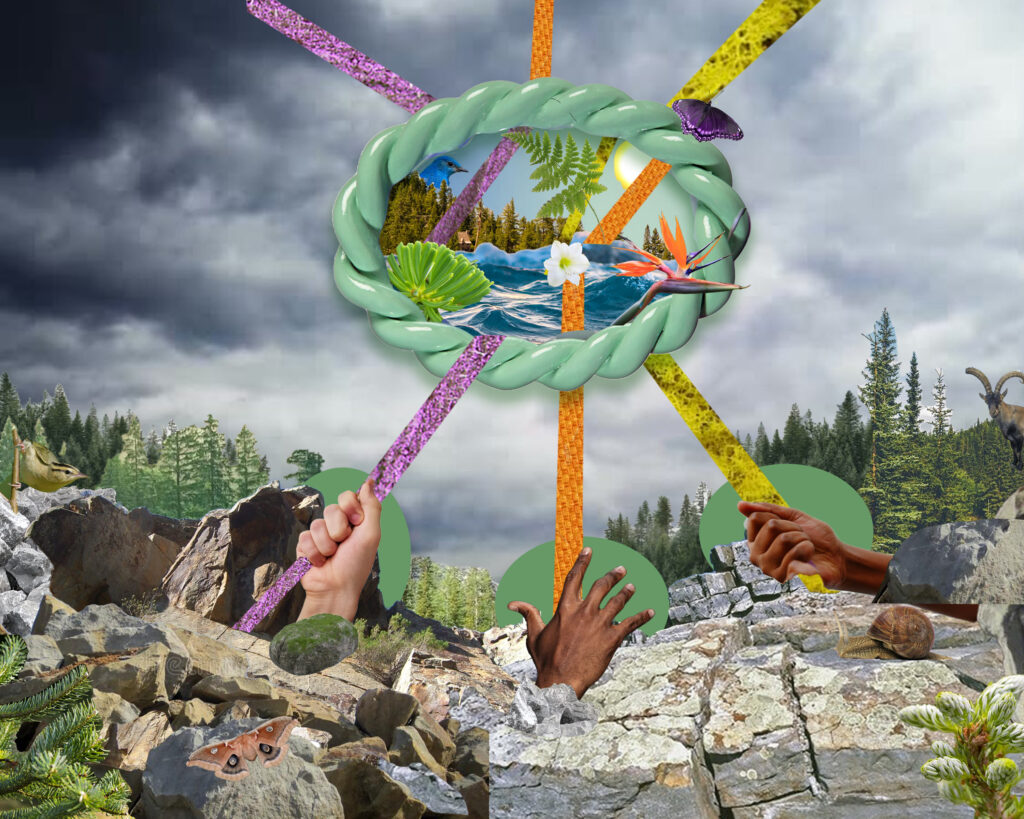
Clearing Three – A Sudden Vista
Through a commitment to authenticity and rigor—and doing the necessary work of deepening our understandings of historical and current conditions that affect our individual and collective experiences—we come to a sudden vista, an opening in our capacity to see a different future. A future where we all have the ability to thrive.
It is here that a visioning process can truly expand our shared picture of a liberated and liberatory future. From this vision, we can outline the values and principles that guide how we be with each other in liberating ways and define some key short term and long term transformation efforts, arriving together at those aspects of the organization that, if transformed, would enable people to experience an actual taste of equity in the immediate term while working on efforts to change the organization overall in the long term.
What we are creating is not new, yet it can be wholly unfamiliar. However, we have everything we need to make this visionary future possible. It simply requires courage, imagination, and the willingness to move as if we have one foot firmly on land and the other submerged in the tumultuous and profuse waters of the sea.4

Clearing Four – A River Flows
Once the vision, values, hopes, and dreams, the team can start developing some focused priorities and goals and the implementation effort begins to flow. But equity transformations are always a mix of inspirational visions and more tangible decisions and practices. Weaving across the two is the art of advancing complex systems change in which we are developing experiments across the organization’s functions and programs. Or it might be one or two short and long term efforts from which the team and organization is continuing to learn and to refine in ongoing cycles of reflection and growth. What matters is that the effort is continuous and fluid, and that the fluidity takes into account boulders, logs, beavers, otters as obstructions are also natural innovations to the existing ecosystems. Throughout this process, the team is meeting current capacity and emerging circumstances in ways in which both the vision of equity and the realization of equity are contiguous tributaries in the river’s powerful flow.
Context Affects the Terrain
While we are all swimming in the torrential waters of racial inequity and other intersectional forms of oppression, we are affected differently. Some are buoyed by floatation devices. Some are carried along by speedboats. Others are fighting to keep their airways above the surface of the water. The same is true for leaders, teams, organizations, and networks.
To make sense of these differing contexts—at all of the levels of racial oppression including internalized, interpersonal, institutional and systemic—we are going to describe differing approaches based on where different types of individuals, teams, organizations and networks live along a white dominant-to-liberatory spectrum: 1) White Supremacy Culture, 2) Multicultural Stance, and 3) Pro Black and Indigenous.
While such classification efforts are inherently overly simplistic, there is sufficient value in outlining different approaches based on these categories, contexts and associated conditions.
1) White Supremacy Culture (aka “The Delusion of White Supremacy & the Culture that Upholds It”)
In an organizational culture of white supremacy, organizations are habituated to working in ways that uphold the delusion of white supremacy whether intentionally or not. These cultural practices have been laid out in the work of Tema Okun and continue to be deepened by other racial equity practitioners. Initially identified as thirteen habits, the framework has evolved to include nuanced descriptions of behaviors that reify inequity, transactional relationships, and oppressive power structures. These cultural habits are exemplified by valuing perfectionism, individualism, fear, right to comfort, competition, urgency—and drive most organizational decisions and overall organizational culture in white dominant organizations.
These organizations are most often:
- White led and/or have a history of white leadership and predominately white staff (not always white-led; may include people of multiple races at various levels of the system but not in large numbers in leadership and if so, not for very long);
- Equity focus is on diversity, equity & inclusion (DEI), with an emphasis on diversity; and
- People exhibit and experience disconnection from source (a higher power and understanding of the world as greater than ourselves such as through spiritual, natural, cultural, ancestral, and/or creative practice); dissociation from their bodies; distancing from their emotions; and distortion of their stories.5
- There are also historically people of color-led organizations that operate predominantly in this fashion; most often they are in areas of work that are deeply steeped in white supremacy culture such as some legal, policy, research, philanthropic and merit-based youth-serving organizations.
Deep equity work in this context focuses on making visible the ways in which white supremacist ways of being and doing are operating as an uninterrogated norm which serves to reify white leadership and the myth of white supremacy and/or undermine the wisdom, gifts, and value of BIPOC people. Organizations in this category are often set up to support the learning, comfort, safety, and power of those in leadership and particularly white leaders. Change processes can unintentionally replicate these patterns at the expense of native people and people of color.
Racial equity change makers will often focus on cultivating equity-based awareness and understanding with white leaders in the system to ready them and thus the organization for deeper equity work. This aspect of the change effort can be very depleting for staff of color in every level of positional power as well as for all staff with less positional power within the system. The tax of this effort is in direct relationship to white leaders willingness, courage and capacity to develop a baseline understanding of structural racism and intersectional elements of oppression. If leaders are resistant to deepening their awareness and/or actively suppressed learning then little progress can be made without developing alternate leadership structures to support the organization in its evolution.
2) Multicultural Stance
In multiracial/multicultural contexts, organizations tend to exhibit characteristics of both white supremacy culture and what Okun would call “antidotes.” In this instance, an organization might be more recently led by people of color and/or have significant numbers of people of color throughout the organization including on the leadership team. In this context, the racial equity and liberation (REAL) work is more often focused on equity, which is made possible by the fact that people in the organization have a solid understanding of structural racism and intersectional elements of oppression.
The organizations are often actively seeking to disrupt the habits of white supremacy culture and people have more shared practice of expressing the harm caused both within and beyond the organization. However, having not yet fully developed the muscles of an equity-based organizational culture, the organization and its leaders will often default to white supremacist ways of working in urgency or in high-stakes decision-making, for example relying on positional power instead of embracing wisdom, experience, and skill-sets from multiple people in the system and therefore have trouble implementing equity-based systems change internally.
While all racial equity work needs to center healing, the work in multiracial/multicultural contexts often necessitates a focus on healing at intra-personal, interpersonal, and organizational levels simultaneously in order to create the needed conditions for equity-based systems change. REAL change in this context is about unlearning our beliefs and related actions as a result of internalized oppression and our complicity with white supremacy as people of color. For white people in all contexts, the work is about interrogating internalized white supremacy so that long standing ways of maintaining privilege are dislodged, making space for new ways of living and being that don’t center whiteness and the power it exerts in explicit and implicit ways. Specifically, in multiracial/multicultural contexts, white people tend to have more systems based understanding but are often still struggling to recognize that impact is not exclusively the result of individual intention. The arc of learning in this context is to develop a more complex understanding of the relationship between “it’s all my fault” and “it’s all the systems fault” in order to recognize that—because of race, power and privilege—they are both simultaneously true. In order to live into this complexity, it calls on all of us to begin to embody new ways of being.
3) Pro Black and Indigenous
In contexts where Black and Indigenous people, wisdom, and cultures are centered, organizations are led and predominately composed of multi-identitied or single-race identified Black, Indigenous and people of color (BIPOC) that have done work to address anti-blackness and anti-indigenity as a collective. The organizational vision and mission are rooted in social justice and liberation. People exhibit greater connection to source. They are in touch with the wisdom of their bodies and their emotions and are resourced by and able to be in whole and simultaneous stories. The focus of the work is beyond equity toward liberation and sovereignty.
In this context, healing work (individual and collective) is both foundational and ongoing as the organizational culture exists in a wider, toxic, and systemically oppressive society. In addition to engaging in healing and liberating practices, liberation requires continuing to address inequities; building our collective muscles for engaging in generative conflict, giving and receiving feedback, and holding each other in loving accountability; in addition to developing and evolving more equitable power structures and practices. It takes collective care and courage to embody and enact the systems, structures, ways of being that emulate the world we want.
There is great potency in this context as it creates the ability to experience some of the new world that we want while still living in the hollowed shell of a decaying, oppressive society. And too, the dissonance between two worlds requires rigorous attention and care on the part of the team as well as humor and love. It is here that we begin to crack open the old and spill toward the new.
“When I dare to be powerful to use my strength in the service of my vision then it becomes less and less important whether I am afraid.”
Audre Lorde
Approaches and Practices
So much of the focus of racial equity-based system change is on tools and frameworks. This tendency reflects the white dominant habit of overvaluing numerical data and the written word. While surveys, assessments, numerical analysis and the frameworks that outline how to apply them are valuable, they will not, in and of themselves, lead to intersectional racial equity let alone liberation. What will lead to equity is changing both what we do and how we be together. Assessing where an organization in terms of racial equity is the first tiny step and can be harmful if other steps don’t follow.
The Elements of Transformation
We have found that the most essential approaches to advancing intersectional race-equity systems change are those rooted in the elements of transformation toward liberation acting as the five fingers of one hand:
- Deep Equity & Liberation
- Complex Systems Change
- Leadership & Power Sharing
- Innerwork
- Multiple Ways of Knowing
What we are up to in our justice work boils down to equity and liberation whether we are talking about environmental justice, gender justice, educational access, or any of the social and economic harms resulting from the legacies of slavery and colonialism in the U.S. Advancing this kind of change IS complex systems change. In order to lead complex systems change, we must expand our understanding and expressions of leadership to embrace power-sharing and collaborative action. Leading together in this way requires innerwork, so we can be present for and resilient with change, and expanding how we know and what is considered wisdom in order to dislodge the dominance of white, western culture. This is individual and collective work. We have written extensively about this. For a deep dive, please read our blog on Practicing the Elements of a Liberating Ecosystem and earlier articles published in the Nonprofit Quarterly (NPQ): Pursuing Deep Equity, Cultivating Leaderful Ecosystems, Embedding Multiple Ways of Knowing, Influencing Complex Systems Change, and Centering Inner Work.
Equity-Focused Teams
In organizations and networks, particularly majority white and/or white dominant culture and multiracial/multicultural ones, any equity focused effort needs to be supported by an internal equity team—one that draws on the organizational diversity in terms of roles, experiences, expertise and identities. In order to advance equity, there needs to be an aligned and skilled group to shepherd change that has the credibility to champion emerging changes. Some of the qualities of equity team include:
- people committed to equity;
- people who have some lived experience of the effects of intersectional and systemic racism;
- people committed to the mission and vision of the organization;
- people who have either have the decision-making power and/or influence ability to advance change;
- people willing and able to commit to the time and effort equity efforts will require (note: the organization needs to be sure to make this focus and attention possible, e.g. this can not be an additional item added to people’s work expectations without removing other things);
- people able to hold confidentiality (share learning not other people’s information) and
- people able to engage in difficult conversations and see the potency of generative conflict
In contexts where Black and Indigenous people, wisdom, cultures are centered and organizations are rooted in a liberatory stance, the commitment to and experience with advancing racial equity exist across the organization and power is shared more broadly. In this context an equity team may or may not be necessary. Rather equity transformation efforts can be held in existing structures and team compositions. Racial equity coaching and consulting support in this context is even less about the doing and more about the being, tending to the complexities of transformational change in interracial teams and organizations while existing in a violent, toxic, and oppressive society.
Internal Skill Development
In all contexts, advancing intersectional racial equity requires that we develop and/or deepen our skills in being deeply present, loving, and human with one another. It means we need to lift one another out of survival states—where all energy is necessarily focused on getting our basic needs met—and cultivate the ability to be present to past and current suffering, giving voice to what has been unspeakable, entering conversations from a place of deep curiosity, and being willing to engage with difference—different perspectives, experiences, ways of making sense of the world. We do this because the change we seek actually requires all of us. It will not happen because of a few exceptional leaders. American exceptionalism is actually part of the knot that binds us in deeply inequitable ways.
Depending on their context, as outlined in the earlier section, and the existing experiences and expertise of different teams, new skills and/or muscles (as the nascent skill may actually exist it is just underutilized) will need to be developed. That said, there are some foundational skills and/or muscles needed to advance racial equity and the interdependent elements of a liberating ecosystem. They are:
- the ability to engage in generative conflict—actually embracing difference and the ways it can lead to conflict as a source of creativity and change;
- providing real-time affirmative and critical feedback on how we are impacting one another so that we can learn and grow;
- recognizing that organizations, leaders, teams and networks need supportive structures and practices to survive in all times and most certainly to thrive during equity change efforts so be sure to get your foundation set before building something new; and
- holding loving accountability with one another – “the practice of loving accountability consists of honest and authentic communication, vulnerability, and the willingness to hold each other accountable for our impacts—beyond just words. If a collective value or guiding principle is repeatedly violated by someone, and no amount of communication and support can interrupt it, then loving accountability instructs us in employing meaningful consequences—not as punishment but rather as ensuring the health of the collective through meaningful boundaries.”6
Depth of Engagement
Any authentic, intentional and focused effort to advance intersectional racial equity has the potential to lead to transformational change. Such change could be evidenced by significantly increased understanding of systemic racism and the ways internalized supremacy is playing out in a white leader’s priorities and decision-making. Transformational change could look like a BIPOC team’s success in deepening its generative conflict muscles and being able to really unpack unspoken assumptions and internalized oppression in order to create new ways of advancing its vision and mission that supports the team in being and acting from liberation.
There is no “right approach” to support equity-based systems change. Rather there are necessary nutrients to ensure such an effort will seed, root and flourish. These nutrients are similar whether we are providing one on one coaching, team facilitation and support, or an organization-wide equity change effort. While all plants require differing amounts of sun, water, warmth, all require the fundamental macronutrients of carbon, hydrogen, nitrogen, oxygen, phosphorus, and potassium.
- Clear sense of purpose of and strong commitment to equity effort and its alignment with vision, mission and strategies;
- Willingness to let go of existing practices, structures and approaches and experiment with new ways of being and doing in order to change, learn and grow;
- A recognition that the wound of intersectional racism is still festering and any effort to heal and transform it brings with it the possibility of new injuries, discomfort, alternating periods of remission and acute illness and requires an enduring commitment to stay the course.
As individuals and teams evolve their application and wisdom of intersectional race equity and liberation, there are some frequent markers of understanding that mark this transformation. We draw these from some of the components of Jay McTighe’s and Grant Wiggins’ Understanding by Design framework.7
Perspective
Regardless of the context they are in, individuals and teams are able to articulate and apply the importance of race equity work in their day to day intentions, priorities, and decision making.
Empathy
In all contexts, individuals and teams are deepening their capacity to listen and see and feel things from different points of view and honor the lived experiences and perspectives of one another all while moving toward equity and liberation.
Self and Group Knowledge
People demonstrate a recognition and ability to grapple with their biases, triggers, and self perceptions in order to deepen their own and the team’s capacity for equity-based systems change.
These markers reflect some of those outlined in the modes of the Liberatory Design8 cycle, although those modes are stages of a process and what is being outlined here are markers of understanding, how you might know things are shifting in meaningful ways. Nonetheless, Liberatory Design provides an integrative approach—weaving across design thinking, complex systems change, and racial equity— and serves as another way of thinking about cognitive and behavioral approaches to change rooted in experimentation.
Moving through an Unfamiliar Present Makes Possible an Equitable and Liberatory Future
To live as if. It is not easy. Inner work and our cultivation of the capacity to be present, to see what is, to be part of the rapid, long and slow process of evolution, revolution, to breathe through it all is so necessary. Throughout this work we will dance and sometimes stumble and fall. Our cores must be both strong and flexible; and it takes all of us to reach our appendages toward each other, to lift one another up.
The world depends on us. Race equity and liberation (REAL) work gets us closer to holding each other in a field of love, from which place so many of the ills of the world are healed. As Paula Gunn Allen writes in Grandmother’s of the Light:
“It is said at the time of the beginning, the Goddess will return in the fullness of her being. It is said that the Mother of All and Everything, the Grandmother of the Sun and the Dawn, will return to her children and with her will come harmony, peace and the healing of the world. It is said the time is coming. Soon.”
We are here to turn the wheel toward a new beginning. One in which all of her children are free.
Collage credit: Naima Yael Tokunow
Originally published at Change Elemental
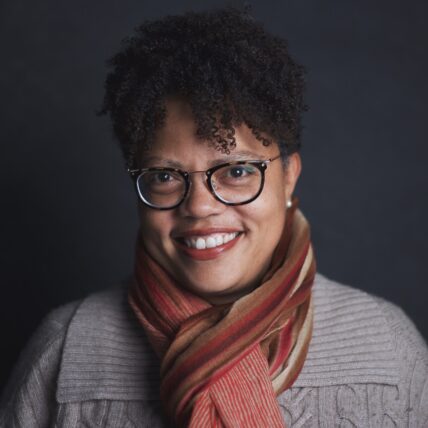
Elissa Sloan Perry (any pronouns used with respect) is of African and Mississippi Choctaw descent, hails from Missouri, and is a 30-year resident of California. She supports people with a vision for an interdependently thriving people and planet to be better in what they do. Elissa joined Change Elemental in 2013 as the Program Catalyst for the Network Leadership Innovation Lab, became CoDirector in 2015, and transitioned to the Leadership Hub in 2021.
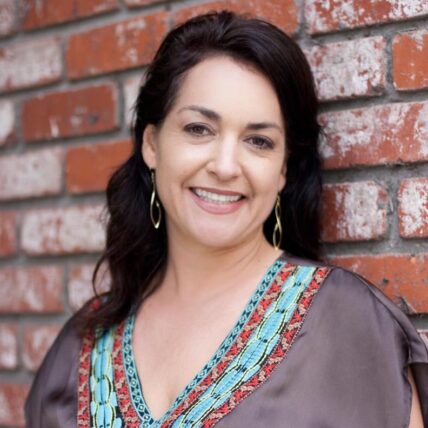
Aja Couchois Duncan (she/her/we) is a San Francisco Bay Area-based leadership coach, organizational capacity builder, and learning and strategy consultant of Ojibwe, French, and Scottish descent. A Senior Consultant with Change Elemental, Aja has worked for 20 years in the areas of leadership, equity, and learning.
1 This framework for understanding the ways oppression separates us comes from the profound and inspiring work of Monica Dennis.
2From the work of Camara Phyllis Jones, “The American Journal of Public Health,” Levels of Racism: A Theoretic Framework and a Gardener’s Tale 90, no. 8 (August 2000): pp. 1212-1215, https://doi.org/10.2105/ajph.35.12.1319, and john a. powell, “Structural Racism: Building on the Insights of John Calmore,” North Carolina Law Review 86 (2007): pp. 791-816.j
3David J. Snowden and Mary E. Boone, “A Leader’s Framework for Decision Making,” Harvard Business Review, November 2007, pp. 1-9, https://doi.org/https://www.systemswisdom.com/sites/default/files/Snowdon-and-Boone-A-Leader’s-Framework-for-Decision-Making_0.pdf.
4“one foot in the water / one foot in the sand is where I hear the best.” Alexis Pauline Gumbs, Undrowned: Black Feminist Lessons from Marine Mammals (Chico, CA: AK Press, 2020).
5 This framework for understanding the ways oppression separates us comes from the profound and inspiring work of Monica Dennis.
6Aja Couchois Duncan and Kad Smith, “The Liberatory World We Want to Create: Loving Accountability and the Limitations of Cancel Culture,” NonProfit Quarterly, May 19, 2022, https://doi.org/https://nonprofitquarterly.org/the-liberatory-world-we-want-to-create-loving-accountability-and-the-limitations-of-cancel-culture/?utm_content=208660872&utm_medium=social&utm_source=linkedin&hss_channel=lcp-542508.
7David J. Snowden and Mary E. Boone, “A Leader’s Framework for Decision Making,” Harvard Business Review, November 2007, pp. 1-9, https://doi.org/https://www.systemswisdom.com/sites/default/files/Snowdon-and-Boone-A-Leader’s-Framework-for-Decision-Making_0.pdf.
8“Introduction to Liberatory Design,” National Equity Project, https://www.nationalequityproject.org/frameworks/liberatory-design.

Network Weaver is dedicated to offering free content to all – in support of equity, justice and transformation for all.
We appreciate your support!
donate in the box above or click here
Networks: Resourcing Relationships and Interdependence for an Equitable Future Now
Networks for Equity and Systems Change
The events of the past year have made clear what many in and outside of philanthropy already knew: that equality in resource distribution is not equity, that much of what was thought impossible to change – telework policies, reporting requirements, fiduciary responsibilities – is suddenly possible, that what we need to shift big systems is interdependence (not codependence), and that what is needed for this shift to happen begins with strengthening our relationships with one another – as individuals, organizations, and communities.
Networks offer a structure for linking people and groups of people with a shared vision and shared values to build and strengthen the relationships necessary to shift big systems. By offering us opportunities to work together in ways that challenge us to build different understandings of and relationships to power and to each other, we are able to move in more interdependent and interconnected ways.
Many individuals and organizations – particularly those rooted in Black and Native communities, queer communities, and immigrant communities – have experience working in networks both rooted in and working to advance equity and justice yet are often not sufficiently resourced for this work. Other entities, including many funders, are bringing increased attention and resources to working in this way and yet these many groups that are poised to resource networks are still just learning about how to do so in ways that align with equity and manage disproportionate power dynamics.
In this moment of possibility for reimaging big systems to live our imagined future of love, dignity, and justice now, we are sharing some learning from a late-2019 gathering of nearly 70 network funders, practitioners, and participants about how network practitioners and some funders are nourishing and growing networks for equity and systems change.
An Experiential and Embodied Approach to Learning in Networks
The Networks for Equitable Systems Change gathering was co-created in partnership with Change Elemental, Uma Viswanathan and Matt Pierce at the Robert Wood Johnson Foundation, and a design team of network practitioners including Allen Kwabena Frimpong, Aisha Shillingford, Marissa Tirona, Robin Katcher, and Deborah Meehan. The group came together to engage with practices for building, resourcing, and sustaining networks. Together, we set out to learn about the following questions:
- How have funders and other organizations worked together in networks that promote equity and systems change?
- What are the barriers to resourcing networks for equitable systems change and what would it take to shift those barriers?
- What is the personal work and way of being needed to fully engage in networks, equity and systems change?
While desk research and interviews can be useful learning tools, we decided to take an experiential and embodied approach to learning about our questions. By bringing convening participants into the experience of network building in real time, we were able to create shared experiences that led to shared understanding about what it takes to build and sustain networks that can shift systems.
We can’t shift systems when we’re only touching one part of the elephant. We need spaces where the whole ecosystem comes together, bringing various perspectives that can give us a picture of the whole. Rather than host separate conversations with funders, intermediaries, and grassroots organizations, the gathering brought together many parts of network ecosystems to discuss how folks were experiencing power sharing within networks.
Below are some of the ways the experiential design of the convening – in addition to the deep expertise and knowledge that participants brought to bear – helped co-create our elephant and answer some initial questions about networks…
We Challenged Dominant Ways of Building Alignment through Rigid Frameworks and Definitions and Instead Reached Shared Understanding with Storytelling
Through experiential learning and storytelling, convening participants aligned on shared definitions for what we mean by a network as well as successful practices for building, sustaining, and resourcing networks.
With our design team, we co-created a learning network that engaged people with different access to resources, different kinds of power, and different experiences and roles in networks. We were concerned about bringing so many different folks together to talk about networks when we all were coming in with these different experiences, definitions, etc. We faced the same pressure points that networks face: how do we distribute resources across this group and compensate people for their time and labor? How can we facilitate more open discussions with transparency and deeper sharing among groups who have different priorities, expertise in networks, roles in the movement ecosystem, and kinds of power? Where do we need alignment and shared definitions and where should we hold generative tensions and conflict?
Initially, we considered aligning the group through some shared definitions and research in networks before coming together, but that process seemed time consuming and didn’t fully honor the wisdom in participants’ different perspectives and experiences. Instead of creating written definitions and a compilation of research to align participants on a common framework, we had attendees prepare spark stories – a short story that communicated their experiences and challenges in a network when working across funders, individuals, grassroots organizations, and other entities. Participants shared stories in small groups and each group created an image to show similarities and differences in themes across stories. The storytelling accelerated shared understanding in small groups and highlighted the multiple perspectives in how participants understand and experience networks.

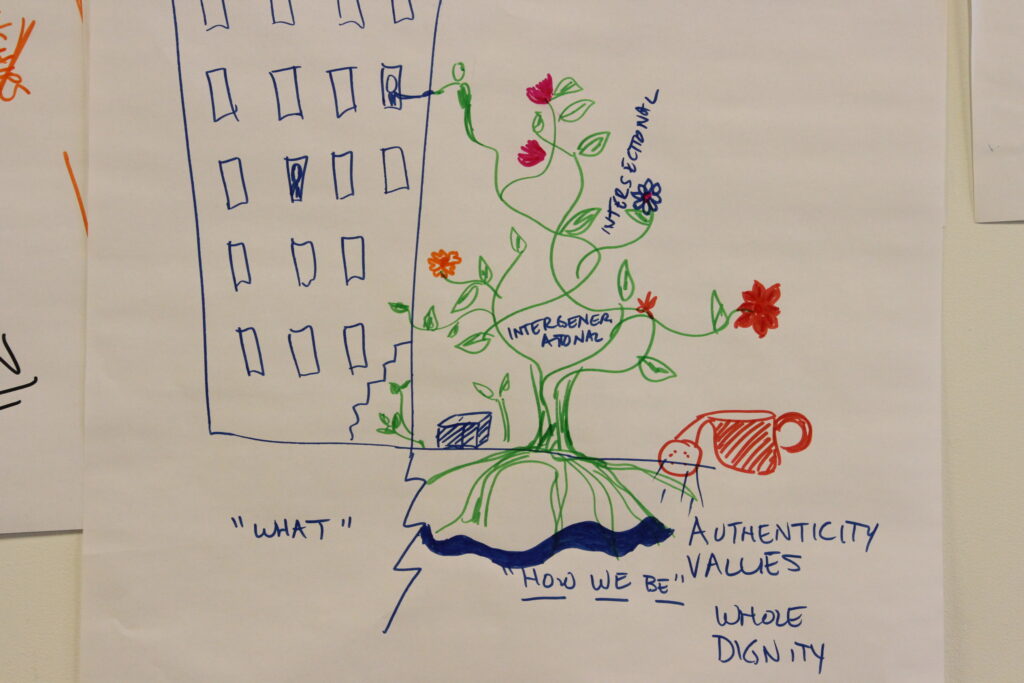
Many participants also shared their spark stories in video conversations. In this video, design team member Allen Kwabena Frimpong and Rachel O’Leary Carmona from AdAstra Consulting share their own definition of a network.
We Used Art Making to Illuminate Power Differences and Start Deeper Conversations about Power Sharing in Networks

Navigating power differentials – including naming and managing them – was a key element in supporting shared learning in this diverse space and also mirrored the ways in which engaging with power can create generative conflict that supports network building or exacerbates unnamed tensions that derail it.
At one point before the convening, some funders were feeling nervous about their power relative to other groups and considered having a separate space. We ultimately decided against that and instead brought funders together to discuss how we might acknowledge and visibilize power differentials (rather than obscure them). We also saw this as a way for funders to build practices for being in spaces where they have more power related to resourcing (such as in a network).
In an exercise from Theater of the Oppressed participants could make visible the power differences between funders that financially resource networks and other network participants. Participants positioned chairs differently based on their vantage point and each new sculpture was in dialogue with the previous one, creating space for different perspectives in support and in tension with each other.
In this spark story, Sage Crump, Cultural Strategist, shares her experience with power as an intermediary navigating the relationships between networked organizations and funders.
Starting with this creative exercise created a bridge to harder conversations about the barriers to equity in resourcing networks such as how money is distributed across network participants, inappropriate use of power, or challenges that come up when there is misalignment between the equity values of a network and the culture of a funding institution.
Convening participants Eugenia Lee of Solidaire and Rajiv Khanna from Thousand Currents discuss what it takes for people inside large funding institutions to align foundation culture with equity and other values needed to better support networks.
We Made Space for New Conversations about Resource Sharing and New Processes for Resource Distribution
Equity should inform how we resource people to be and learn together across power, identity, and roles and then to do together (in networks). Yet external systems, norms, and habits can often inhibit us from living out our values. One example of this is the radical redistribution of resources in neworks, which requires leaning into new practices for how we work together and support each other given our proximity to power and resources.
To financially support people’s attendance at the gathering and their contributions to the space, we created an equity fund. The set-up and distribution of the convening’s equity fund provided the group with an opportunity to lean into these new ways of being. It required vulnerability from participants in asking for what we need and for those holding financial systems to figure out creative ways of reducing the administrative burden on participants, for example by offering stipends rather than reimbursing receipts.
To guide us in these new (to some) ways of being and doing, we created a set of fund principles. Adapted from Leadership Learning Community, the principles included:
- People can ask for what they want and need
- Adopt an abundance mindset (we can always find a way to get more)
- Function with trust, no questions asked
- Give people examples of what they might use funds for (e.g., lodging, childcare, funds to cover a missed day of work for hourly professionals, etc.)
At first, people asked for very little. After more enthusiastic nudges and encouragement to lean into the principles and the discomfort of asking (for example, by looping back to confirm, clarifying our equity principles, and sharing more examples of what people have asked for) more participants felt comfortable asking for what was truly needed.
The initial hesitancy from participants prompted us to think more about who feels entitled to ask for equity funds and how that may relate to our individual sense of worth (eg. how much do I really need this?) and relationship to the collective (e.g., how much might others need relative to me?).
During the convening, we shared what we learned from managing our equity fund in this meme-filled presentation, including how we pushed for a “no receipts” policy, which was challenging to navigate from a compliance perspective but saved a great deal of administrative time.
In this spark story, convening participants Elissa Sloan Perry from Change Elemental and Alexis Flanagan from the Resonance Network share another example of resource distribution within a network, including the vulnerability and trust needed to talk openly about personal wealth as a way towards more equitable resource distribution.
While some of the experiential learnings from the convening are captured above, network practitioners and funders also brought together learnings from past experiences in leading with equity and navigating power differentials within networks including how funders operate in networks; the different forms and shapes networks might take; capacity, impact, and infrastructure needs in networks; and ways of being needed to build, resource, and support networks.
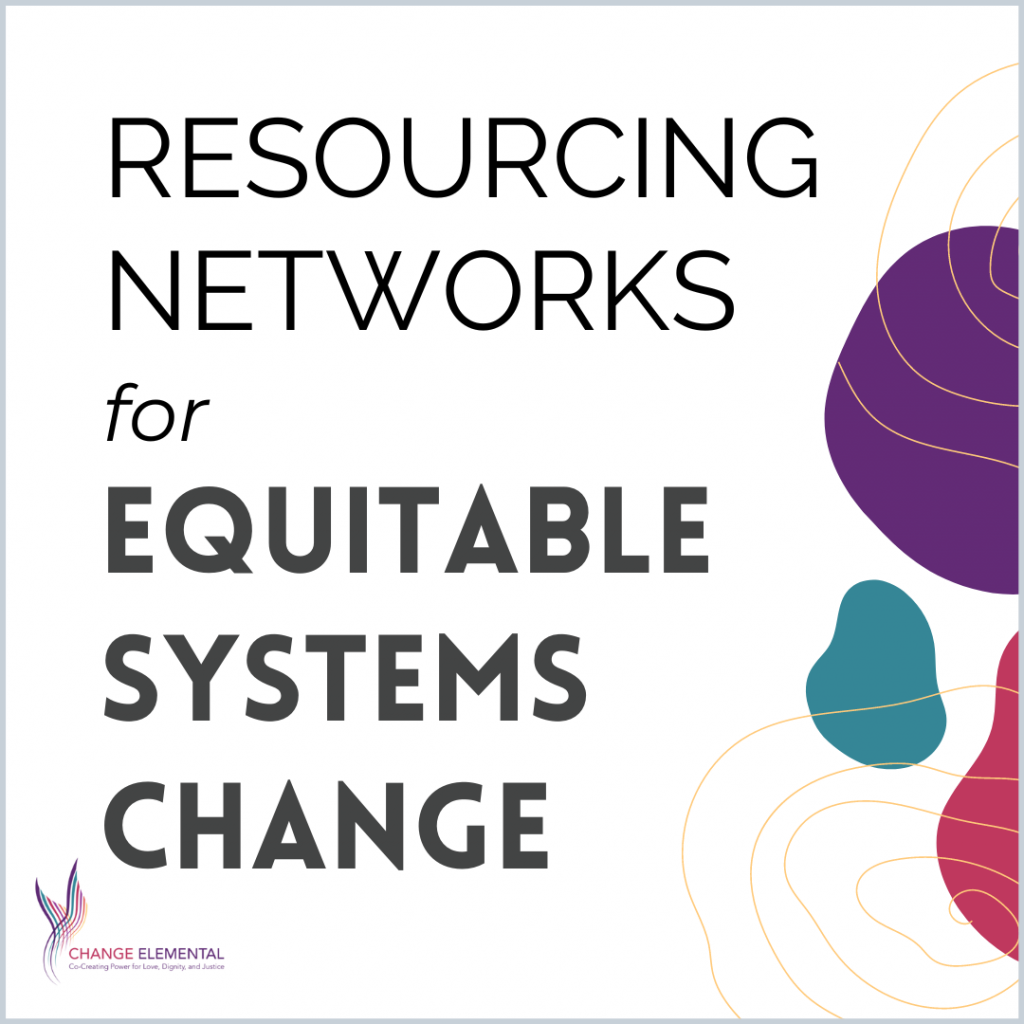
To dig into more stories and insights as well as many other resources about networks, see the report, “Resourcing Networks for Equitable Systems Change: Perspectives from Funders, Intermediaries, Individuals and Organizations on How We Fund and Support Networks for Equity.”
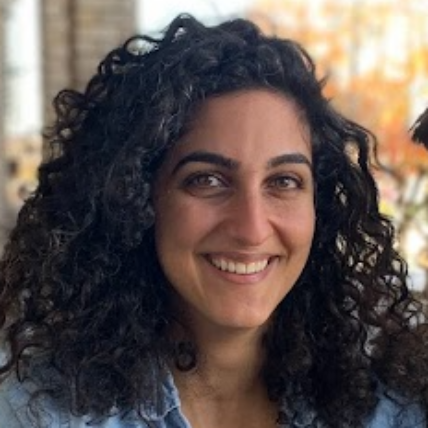
Natalie Bamdad (she/her/hers), joined Change Elemental in 2017. She is a queer and first-gen Arab-Iranian Jew, whose people are from Basra and Tehran. She is a DC-based facilitator and rabble-rouser working to strengthen leadership, organizations, and movement networks working towards racial equity and liberation of people and planet.

Alison Lin (she/her/hers) supports leaders in authentic collaborations to transform people and systems toward love, dignity, and justice. With over 20 years of leadership experience, she draws from work in race equity, complex systems change, organizational development, learning through experimentation and life with a focus on issues affecting LGBTQ and BIPOC communities. She joined Change Elemental in 2017.
Video recording, editing, and photos by Breathe Media Group
Graphic recordings by Brandon Black
Cover photo by Brian Stout
Originally published at Change Elemental

Network Weaver is dedicated to offering free content to all – in support of equity, justice and transformation for all.
We appreciate your support!
donate in the box above or click here
The Angel's Mafia: elements to be addressed in peacebuilding governance
Our Better Angels need to get their act together.
I find myself looking back at five years working in peacebuilding and conflict transformation. Almost as long as I spent working as a mechanical engineer in the aerospace field. The business of designing and building spacecraft has one commonality with the “business” of building peace: they both involve people getting together and doing stuff. I used to be weary of the term peace-building as it implies the linear construction of something which can be described as an emergent property of a complex system. What is peace anyway? No, I’m not going down this rabbit hole now, but I leave the open question here for you to entertain yourself with.
You can’t really build peace the same way you build a Falcon 9 rocket. You can’t build the relationships between people the same way you build a clock but you can create the conditions for relationships to emerge, to strengthen and evolve. You can build the scaffolding that makes peace a more likely outcome than violent conflict. A Falcon 9 is just a very complicated clock. Peace is more like a cloud that emerges out of thin, moist air.
Back to my point: I left my engineering career in pursuit of a revelation. And that revelation has come back to haunt me, five years later.
Whether you’re building rockets or building peace, people have to come together and coordinate efforts to accomplish a Mission.
People have to get themselves organized. If it’s the rocket they’re building, the way of organizing is pretty straight forward. It’s a linear process. We’ve been building rockets for quite some time now and have learned a lot about how to do that efficiently. There are still some hiccups every now and then. When these happen, it’s up to the skills and mastery of the project manager (PM) and systems engineers (SE) to make sure they don’t compromise the Mission. The Mission is sacred. You may be an expert planner but as a PM, you’ll be judged by how creative you are when dealing with the hiccups: a delayed supplier, a volcano eruption, a failed test, a new requirement, a pandemic or a world war. The best PM’s I have met in my previous life were those that knew that you need to be ready to deal with contingencies and uncertainty. This is where a good governance system comes in handy. Running the day to day operation of an engineering team requires discipline, practice, expertise and structure. You’re inside a bubble of control. When this bubble bursts and the outside world comes barging in, you need something different. You’re operating in a different regime. The outside world is complex. Full of interconnections and invisible, mysterious forces. Enter the Law of Requisite Complexity which states that “In order to be efficaciously adaptive, the internal complexity of a system must match the external complexity it confronts.” And this was my revelation back in the day: management is different from governance! Management is all about the plan. Governance is about dealing with situations where the plan that you had is no longer the plan that is needed.
With the exception of perhaps the mafia or terrorist neworks, we don’t know how to organize in an enviroment of complexity and uncertainty. Since we enter kindergarten (and perhaps even earlier through models unconsciously passed on by our parents), we are conditioned to think that someone else, a parent, a teacher, a headmaster, a boss, a political leader, a country, a government, an institution, an NGO, you name it, must have The Answer. someone must have The Plan. Someone must have An Understanding of what is going on. Someone will manage it!
When faced with problems that, by definition, have no well defined problem-statement, no boundaries, no solution, we revert to this very rudimentary, almost medieval governance system where a few (typically old, white) men call the shots for all of us. I have nothing against old experienced men calling the shots sometimes (they may have some clever ideas), but I am against this being the only form of social organization in complex environments.
The peacebuilding world has taught me a lot about what it takes to thrive in a complex and ambiguous environment. If you survived a civil war and are engaged in local peacebuilding, you’re pretty much an expert in the Vuca World. I struggled to find my voice in this field. After all, what do I know about peace? I have never heard an AK47 fire.
I found my voice in the overarching theme of social organization and governance. When complexity and uncertainty (aka real life) bursts through your control bubble, that’s when investing in a governance system that obeys the law of requisite complexity makes it or breaks it. After five years witnessing the efforts of 24 South Sudanese Angels coming together for peace, here are a few elements I believe should be addressed when thinking about governance systems.
Communication, language and meetings
Communication is the essence of human social organization. For better and for worse, we’re doomed to use language to communicate and coordinate with one another. The pandemic zoom years have shown us that, while it is possible to keep in touch and even do management decisions remotely, there are times when a face to face meeting is unreplaceable. Whoever feels like a peloton bike is a full replacement of a regular bike has probably never experienced the bliss of a bike ride by the beach in a warm, spring morning.There are moments in the life of a peacebuilder when you literally need to see eye to eye. Feel the energy in the room, let your body speak and listen. There’s simply no virtual replacement for this. The same holds true for any team. There’s simply no replacement for a well facilitated face to face meeting when what’s at stake is the future of the Mission.
Non-violent communication, skillful facilitation of meetings, hosting space for convening, trust building and sharing, are all necessary groundworks for building a solid governance system. The groundwork needs to be in place and ritualized before going into the hard and messy part.
Sense-making, meaning-making, decision-making (SMDm)
What just happened?
If you’re convening a governance meeting, chances are, something happened. Because everyone on the team is so focused on his or her own subsystem, trying to draw a complete picture may be challenging. Typically, we jump too fast to conclusions here. This is where systems thinking comes into play. Every person in the room will contribute with his / her own perspective on the system and so it’s really important to facilitate a sense-making session that casts a wider, systemic lens on the issue. Whatever happened is the result of a system. Whether you’re aware of it or not, it’s 100% guaranteed that there’s an underlying system moving the pieces. The aim of this sense-making session is to flesh out the elements of this system and move to the next phase of the discussion by asking “What does this mean for the Mission?”
For the engineer working on Falcon 9, it’s relatively straightforward to answer this question. It may take some research, modeling and forecasting but it should be possible to figure out what a delay in the delivery of a component means for the whole mission. Remember, it’s just a very complicated clock, not a cloud.
This is not the case for peacebuilding. The meaning of whatever just happened is deeply related to your own individual meaning making structures and how it is shared with the collective. Collective meaning making in social complex systems is impossible to do without some agreement of what reality is. Without this agreement (or “epistemic commons” if you will) how do we know what we know about the social reality and how do we co-create a shared social imaginary? You need to have a shared dream or shared goal to work towards. Without this shared dreamland, collective meaning making becomes impossible.
If sense and meaning are shared (easier said than done), proposition crafting and refinement should easily flow out of the previous steps. What?, So What?, Now What? This is the way many Western philanthropies and organizations talk about learning and adapting “and governance” itself is a very Western word with all sorts of unintended connotations. However, this is a universal human concept. Every culture has a way of making decisions. We in the Global North tend to sometimes forget that every day all over the world, people in communities come together to come up with proposals to solve problems. Working in smaller teams or networks could prove to be extremely creative and effective if it is coupled with a decision making process, such as consent decision making to fast track good ideas into actionable prototypes and have a basic foundation for what to do when you do not agree or the plan goes sideways.
Finally, the governance process should answer two cornerstone questions: accountability and legitimacy. Whatever comes out of the process must be accompanied by a clear statement of accountability (who has skin in the game?) and legitimacy. In Western contexts, charters, MoU, constitutions, manuals, contracts, can play a role here. But these can overcomplicate the real work. What I have found in my time in peacebuilding is that the deepening of relationships and agreement for action can start with three questions. What do we want to do together? How will we make decisions? What do we do when we don’t agree? In short, how do we want to show up together? This is one area where I think there’s a lot to innovate in civil society movements. Peacebuilders can learn from movement activists how to set the foundation for adapting quickly while keeping a focus on the desired goal.
Organizing for Peace
Kurt Vonnegut knew it: “There is no reason why good cannot triumph as often as evil. The triumph of anything is a matter of organization. If there are such things as angels, I hope that they are organized along the lines of the Mafia.”
I believe that our perennial mission is to organize. We do that so elegantly with clock problems. Now it’s time to complement that toolset with other rituals that help us organize around cloud problems, too. I hope Pinker’s Better Angels take a lesson or two from the Mafia, but outrage or hope alone won’t cut it. I believe there’s a lot to be done to help peacebuilders around the world get organized in a way which creates, not a rigid, but an emergent order that is able to sense and respond to the challenges posed by the destructive forces of violence and war.
Pedro Portela is the Founder of the Hivemind Institute, a think tank and action research organization in Portugal dedicated exclusively to prototype new models of local organization, advocating for more systems literacy and proposing networked approaches to complex social problems.
Originally published at The HiveMind
featured image found HERE
Appreciate Network Weaver's library of free offerings and resources?
Donate below or click here
thank you!
The illusion of hopelessness
The war in Ukraine is a symptom of something bigger— and within reach
In times of war, we are led to believe we are powerless.
We are told that violence is inevitable, an unfortunate part of the way things are. And that the way things are cannot change.
As world events have transpired over the last two weeks, this illusion has begun to splinter
* * *
Russian military forces invaded a sovereign nation on February 24th. Within days, the United States, the European Union, and other nations announced a series of economic sanctions on Russia. At the same time, countries of the European Union waived visa rules for Ukrainian refugees–allowing those fleeing war to enter the EU without having to seek asylum.
Homes across Europe have opened their doors to Ukrainians fleeing war, and President Biden announced that Ukrainian refugees would be welcome in the US “with open arms.”
These moves were swift and unprecedented. Rules that had long existed were replaced with new ones. Systems changed as people and countries moved together in response to a humanitarian crisis.
How quickly rules can change when we want them to.
How malleable systems can be when we agree on what is right.
* * *
Russia’s attack on Ukraine, like all wars, is a symptom of a worldview of domination and extraction.
Like all wars, it exists amid other symptoms and consequences of this worldview: modern dependence on oil and the interests of the fossil fuel industry; unmistakable racism at the Ukrainian border as Africans were systematically turned away.
And the global coordination to condemn Russia’s attack and support the Ukrainian people was made possible, in part, by white supremacy: Western sensibilities were stirred by seeing white refugees. Meanwhile, escalating humanitarian crises in Afghanistan, Palestine, Yemen, Syria, Somalia, and Ethiopia have not been met with the same swiftness.
Imagine a world where all people in need were met with dignity and humanity. Where violence and harm was met with resounding care.
Imagine systems of governance that hold these values above all others.
* * *
In times of war, we are led to believe we are powerless by those who benefit from our silence. We are led to believe our collective systems cannot change by those who benefit from the way things are. Meanwhile, worldviews of domination and extraction continue to shape our reality and perpetuate harm.
As the war in Ukraine has unfolded, we’ve also seen a wave of dehumanizing legislation against queer and trans young people, increasing threats to reproductive justice, and an alarming epidemic of homelessness continuing in the US, all while COVID cases spike in Europe and Asia.
When we understand that all violence is a symptom with the same cause, we can also see that we are not just spectators to what is happening — in Ukraine or right beside us.
There is hope, and the hope is us.
* * *
“There is never time in the future in which we will work out our salvation.
The challenge is in the moment; the time is always now.”
~James Baldwin
Resonance Network is a national network of people building a world beyond violence.
Originally published 3.16.22 at Reverb
Being a strange attractor
This article forms the first in an intended series of articles. The main theme of that series is to reflect on a new language for social transformation. For me, language goes beyond words, concepts or metaphors. Essentially, it is the filter through which we look on life, perceive our environment and plan our actions. Changing our language, therefore, is a powerful way towards personal and collective transformation.
Every article of the series is dedicated to a specific theme or concept. Yet, rather than enriching your vocabulary, it is much more the shift in perspective underneath the concept that I want to contribute to. In our case, strange attractors are a concept from chaos theory. Exploring strange attractors are therefore a gateway into the world of chaos, dynamical systems and complexity. And what is a strange attractor?
Well… there is no simple answer. But I have an idea where to start.
To enable non-linear reading I visualised the article on kumu as a dynamical map:

The starting point
Life puzzles me. Partly my own. Even more so fundamental questions like how life emerged? Or human sense-making: how on earth is it even possible that we can communicate? I jot down these black & white symbols on a keyboard, they appear on a screen and you can understand what I am trying to say.
In a similar way: given the goodness and well-intendedness of many of us, how are we able to create phenomena like environmental destruction? What social and psychological principles are at play in our daily lives that enable outcomes we don’t want?
The reasons for asking myself these questions are twofold: I have a genuine curiosity to go to the bottom of things, wanting to understand the root causes rather than superficial appearances. Understanding for its own sake so to speak.
And then there is this undeniable desire to drive social change. I came here for a reason. Not to accept what is happening around me, but to play an active role in co-creating our future. This part of me is highly intentional, using knowledge to identify leverage points for personal and social transformation. More specifically, I am eager to learn and embody how I can contribute to meaningful change.
In the past years, those motivations (or better: driving forces) lead me down some rabbit holes, both in theory and practice.
Embarking on a journey into strange lands
Due to my fascination for social change, it is not such a surprise that I studied sociology. There, most approaches and (meta) theories are relatively systematic, with the ambition to explain and the tendency to categorise. It is difficult to speak about the diverse field of sociology in general terms. Yet what I often found was theories and methods that made sense of events once they happened. Categorising the past and projecting it into the future. And then making those events fit the theory. It reminded me of the story of the little prince, visiting the king on his planet*:

Little prince: “Sire–over what do you rule?”
King: “Over everything,” said the king, with magnificent simplicity.
[…] Little prince: “And the stars obey you?”
King: “Certainly they do,” the king said. “They obey instantly. I do not permit insubordination.”
Little prince: “I should like to see a sunset … Do me that kindness … Order the sun to set…”
King: “You shall have your sunset. I shall command it. But, according to my science of government, I shall wait until conditions are favorable.”
Little prince: “When will that be?” inquired the little prince.
King: “Hum! Hum!” replied the king; and before saying anything else he consulted a bulky almanac. “Hum! Hum! That will be about– about– that will be this evening about twenty minutes to eight. And you will see how well I am obeyed.”
I was curious to find out if there is more. My backpack filled with Weber & Elias, Luhmann & Habermas, Foucault & Bourdieu, Berger & Luckmann I expanded my search for answers; and wandered off into the strange lands of complexity science, chaos theory and fractal geometry. For me, those excursions have not only been fascinating from an academic perspective, but also insightful for my life as a social entrepreneur. I invite you to come with me and discover those strange lands. And I promise that I will guide you back at the end.
What’s the weather like over there?
Welcome in the world of complexity! As with most other foreign places, things work a bit differently here. Let’s start with a quick introduction first: As James Gleick in his groundbreaking book “Chaos. Making a new Science” put it:
“the act of playing the game has a way of changing the rules”
If you want it or not: as soon as we arrive at the shores, we are not merely passive visitors. We are active agents and influence what is happening here. A complex system, therefore, is dynamic and adaptable. It responds to its environment yet has its own “agenda”. The question, then, is what provides orientation for the behaviour of the system and the actors within it? The answer: Strange attractors!
Some of us may be familiar with pictures like those:

CC BY-SA 3.0.
It shows the so-called Lorenz attractor. It describes visually how a dynamical system behaves, in this particular case the flow of fluid under certain conditions. The attractor itself is “the whole thing”, the space that spans all potential behaviour. We can see that there are two central attractor points around which the system seems to rotate. The strange thing is that – despite having knowledge about all relevant parameters – it is impossible to predict how the system will evolve over time. This is called nonlinearity. Caused by those weirdly arranged attractors.
As an analogy, you can imagine the weather: Weather with all its components (temperature, air pressure, humidity etc.) is the system. If we measure those components and visualise them, we get our (visualised) attractor of the system; most likely indicating us certain central points. In most geographical locations, there are two main states, summer (dry season) or winter (rainy season). Let’s say “summer” is the attractor state on the left, “winter” on the right. Any day of the year constitutes a point. Usually, we know if it’s summer or winter, and how the next days will roughly be like. Yet any precise prediction beyond 10 days is almost impossible. And at some point, the system will shift. We know it will happen, yet we don’t know the exact day. No matter how much information we have at hand.
As our nerdy friends would say: The weather is a chaotical & nonlinear system. Its behaviour rotates around two central attractor states. This leads to the fact that the system is locally unstable yet globally stable. That’s quite strange, yes. But what does that have to do with social transformation?
To me it seems that societies, communities, families (put any social system you like here) rotate around certain states as well. Conservative or liberal, open or closed to “outsiders”, free markets or state-centred economies. Those systems experience periods of prolonged stability (economic growth with prosperity), followed by a rapid & sometimes unexplainable “switch” (the dotcom or housing bubble bursting). Looking with that lens on my environment has helped me a lot to understand social change. Order and chaos should not be seen
“as antagonistic and fixed states but rather as stages in a process of dynamic and transformational becoming”.
― Elisabeth Garnsey and James McGlade
The same accounts for any dynamical system with more than one equilibrium, more than one attractor state so to speak.
The dance between polarities
Butterflies have two wings. We have winter and summer (or rainy and dry season). There is life and there is death. Following those examples, polarities seem to unite stability and movement. In that sense, opposites are not really opposing each other. They create space for life to happen in between.
“The only way to make sense out of change is to plunge into it, move with it, and join the dance.”
― Alan Watts
We tend to care about what happens around us; and oftentimes have the desire to influence it in a certain way or direction. Joining in the dance does not mean to accept everything that happens. Rather, it means to understand that it is the underlying rhythm that moves us. To change the dance, we have to change the music (or the polarities in our case).
Taking the principle of nonlinearity into account, there are ways to make a certain behaviour (of a system) more likely, orientating it towards a (desired) attractor state. Yet, despite our best efforts, we can never know what will actually happen. Life is unpredictable. But life is not random either.
And we have a true super-power on our side. Social systems differ from the weather in one important aspect: the attractor states are social constructions. They are based on language and culture, on individual and collective agency. And what was constructed once by people can be changed. In other words: We have the capacity to create and establish new attractors.
The attractors of our time
“Grown-ups love figures… When you tell them you’ve made a new friend they never ask you any questions about essential matters. They never say to you “What does his voice sound like? What games does he love best? Does he collect butterflies? ” Instead they demand “How old is he? How much does he weigh? How much money does his father make? ” Only from these figures do they think they have learned anything about him.”
― Antoine de Saint-Exupéry, The Little Prince
Translated into a social context, we can see an attractor state as a shared set of beliefs and internalised symbols and habits. A fix point within a certain system like family or economy. The word “purpose” comes relatively close to it. Let’s examine what the current attractor states of our society are. For the sake of length and digestibility, we will keep it short, unscientific and subjective.
Western thought is highly influenced by the idea of a mechanical universe (Newton) and mind (Freud). It emphasises the difference between an individual and its environment, and the differences between people. The centre of this worldview, then, is the autonomous and isolated individual.
“I, a stranger and afraid
In a world I never made.”
― A.E. Housman, Last Poems
As we know, attractors stabilise behaviour. The attractors emerging out of this particular worldview are economic growth & meritocracy as well as the attempt to control our environment (which includes both our natural and social environment). It is a paradigm of competition, of “me/us against”. As a consequence, we usually only focus on one side of the polarity; the side that we prefer and desire. And we pathologize the other side. Economic growth is good, de-growth is bad. Being happy is desired, depression is something we have to treat with medication. It’s like wanting to breath in all the time, judging all the outbreaths.
Still, orienting our behaviour towards those states brought enormous prosperity (for some) and stability. We live in an era of unseen peace, economic wealth, scientific discovery and global interconnectedness. Yet something is off. It feels like our own inner attractors (our personal purpose, our desire for integration and wellbeing) pull us away from society’s inner attractors. The tricky thing is that both types of attractors – individual and collective – are usually invisible. Usually.
“And now here is my secret, a very simple secret: It is only with the heart that one can see rightly; what is essential is invisible to the eye.”
― Antoine de Saint-Exupéry, The Little Prince
From opposition to integration
We are still in the land of complexity, remember? We learned that here, attractors of a system are not seen as opposites. On summer follows winter, follows summer, follows winter. The system is healthy when it shifts between both states. This leaves us with the question:
What are healthy polarities for us as society?
Let’s look at an example that some of us (me for sure) struggle with: balancing working and resting / free time. An alternative way to phrase it could be: Creating something specific (for others) vs. taking care of yourself only. The current paradigm likes to phrase that as “work-life balance”, one of the most horrible terms I know. As if working would not be part of my life. The underlying polarity is “being productive vs. allowing yourself time to be unproductive”. In a more mechanistic view to drive the point home: running the machine vs. oiling the machine. (with the addition that even “unproductive” time is often turned into a product – like consuming advertisement).

That’s not a healthy attractor to me. And I see myself falling into this polarity if I am not careful and attentive. An alternative way of phrasing it would be: I am enjoying my time either creating something meaningful for other people (a.k.a. working) or I enjoy to just do things for their own sake. In this way, the mechanistic attractor (work vs. life) is replaced by a more wholesome attractor (meaningful and intentional action & enjoying things simply for themselves). It’s still two polarities, yet they don’t oppose each other.
In a similar fashion, we can look at our climate crisis. We live on the expense of our environment. And this challenge cannot be solved with simplistic regulations or public claims that keep the idea of economic growth alive. No, the paradigm of economic growth is not compatible with environmental survival. It does not work to simply include nature into this growth-logic (calling it sth. like green technology). We need new polarities, new attractor states to address this challenge. An economic attractor that allows certain elements to be outside of the linear growth logic. What this could be I leave up for your imagination.
Sounds idealistic? Well, I would call it pragmatic imagination. As all we see around us was an image in our heads first, then turned into “reality”. One invitation I see here is to move away from a paradigm of needing to know and control, rather framing the attractor around a central question. How can we integrate work and free-time into a fulfilling life? How can we assure both our material wellbeing and the wellbeing of the nature that surrounds us? It’s OK to not have the answers (attractor states) yet. But we can (re)frame the attractor around them.
In this, the world desperately needs individuals who are capable of transcending the worldview of opposites, black and white, gain and loss, good and bad. A world of scarcity and competition. Not just conceptually, but with our actual behaviour and actions.
“We but mirror the world. All the tendencies present in the outer world are to be found in the world of our body. If we could change ourselves, the tendencies in the world would also change. We need not wait to see what others do.”
― Mahatma Gandhi
Strange attractors of this world, unite!
Are you seeking to create a future for yourself and others that is different from the present? As an activist, social entrepreneur, philanthropist, parent, consumer …? Then I would consider you as a change agent, or strange attractor. Somebody who inspires and motivates themselves and others to act on a worthy ideal. A strange attractor in that sense can be any individual, but also an idea, a startup or a movement we represent.
We may be far out in the old paradigm, and it is frustrating from time to time. But we can constitute the centre points in the new paradigm. We are the ones to create new attractor states for our common future.
So how can we do that?
I see two crucial steps to make this happen. And you may have guessed already: Number one is to be the strange attractor yourself. Be the space and inspiration for others. Embody a new path for action. Number two is to team up and create (new) social systems jointly. Both steps are courageous and bold. And here is why:
Embodiment is not only an intellectual exercise. Here I speak out of tough personal experience: Stating that I want to achieve something (e.g. to be a humble and inspiring leader) often created distance. Rather than motivating me, it made me (subconsciously) believe that I am not there yet. Doing the inner work is required. Knowing and accepting ourselves. Embracing our inner beauty, shadows and power. And there are no quick fixes or shortcuts.
Teaming up is even more delicate. It requires us to find each other, create thriving teams, organisations and networks. In short: institutionalise new attractors. Probably this will cause opposition. From others and from within. As it requires us to let go of our individual dreams to form collective ones.
My answer to that is: yes, that’s quite a task, but what else should we do? What else are we here for?
Jannik Kaiser is co-founder of Unity Effect, where he is leading the area of Systemic Impact. His desire to co-create systemic social change led him down the rabbit holes of complexity science, human sense-making (e.g. phenomenology), asking big questions (just ask “why” often enough…) and personal healing. Having worked in the NGO sector, academia and now social entrepreneurship
Originally published at UnityEffect.net
Into the Matrix and Beyond: The Value of Network Values and Values-Focused Processes
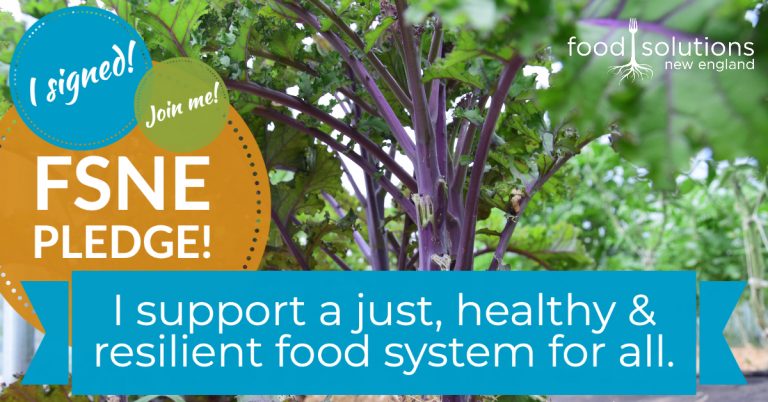
A couple of years after the Food Solutions New England Network officially published the New England Food Vision, and just after the network formally committed to working for racial equity in the food system, it formally adopted a set of four core values. On the FSNE website, a preamble reads: “We collectively believe that the food system we are trying to create must include substantial progress in all these areas, alongside increasing the consumption of regionally produced foods and strengthening our regional food economy and culture.” The four values are:
Democratic Empowerment:
We celebrate and value the political power of the people. A just food system depends on the active participation of all people in New England.
Racial Equity and Dignity for All:
We believe that racism must be undone in order to achieve an equitable food system. Fairness, inclusiveness, and solidarity must guide our food future.
Sustainability:
We know that our food system is interconnected with the health of our environment, our democracy, our economy, and our culture. Sustainability commits us to ensure well-being for people and the landscapes and communities in which we are all embedded and rely upon for the future of life on our planet.
Trust:
We consider trust to be the lifeblood of collaboration and collaboration as the key to our long-term success. We are committed to building connections and trust across diverse people, organizations, networks, and communities to support a thriving food system that works for everyone.
In the last few years, these values have generated a lot of good discussion, both internal to the network and with others, and we are discovering that this really is the point and advantage of having values in the first place. They can certainly serve as a guide for certain decisions, and in some (many?) instances things may not be entirely clear, at least at first. What does racial equity actually look like? Is it possible for a white-led, or white dominant, institution to embody racial equity? Can hierarchical organizations be democratic? Are there thresholds of trust such that people are willing to not be a part of certain decisions in the name of moving things forward when needed?
Recently, FSNE received an email from a Network Leadership Institute alum who now works as a commodity buyer for a wholesale produce distributor in one of the New England states. They reached out to inquire who else in the network might be thinking about high tech greenhouse vegetable production in the region. Specifically their interest was talking about projects that use optics of being “community based,” but are financed by big multinational corporations. “What would a “just transition” framework look like in the context of indoor agriculture,” they wondered, especially in light of undisclosed tax deals happening as the industry rapidly grows.
As it turns out, a public radio editor recently reached out to FSNE Communications Director, Lisa Fernandes, about pretty much the same thing, also referencing other similar projects taking root in different parts of the region. What does FSNE think of these? Part of her response was that there are some good questions that not only the New England Food Vision (currently being updated), but also the Values, can raise to evaluate the potential role of some of these more tech-heavy food system projects and enterprises as the region strives to be more self sufficient in its food production. And this conversation is certainly growing.
These exchanges in our region have had me thinking about work colleagues and I have been doing with food justice advocates in Mississippi. A central part of this also lifts up values as being key to establishing “right relationships” between actors in the food system, and also between advocates and partners (including funders) from outside of the state. I have learned much from Noel Didla (from the Center for Ideas, Equity, and Transformative Change) and her colleagues about the importance of establishing what they call “cultural contracts,” which create a foundation of values-based agreements as a way of exploring possibilities for authentic collaboration. The signing of any contract is just a part of a process of ongoing dialogue and trust building. For more on these contracts and culture building, see the recording of a conversation Karen Spiller and I had with Noel and other Mississippi food system advocates during the FSNE Winter Series earlier this year in a session called “The Power of the Network.”
“Daring leaders who live into their values are never silent about hard things.”
Brene Brown
In a different series of workshops with those same Mississippi-based advocates, we introduced a values-focused tool from the PROSOCIAL community. PROSOCIAL is rooted in extensive field research (including the commons-focused work of Nobel Prize winning economist Elinor Ostrom) and evolutionary and contextual behavioral science. PROSOCIAL offers tools and processes to support groups in cultivating collaborative skillfulness and the critical capacity of psychological flexibility, including the application of Acceptance and Commitment Training/Therapy (ACT) techniques.
The ACT Matrix (see below) is something that individuals and groups can use to name what matters most to them (their core values), along with aligned behaviors (what are examples of living out these values?), as a way of laying a foundation for clarity, transparency, agreement, support and accountability. The Matrix also helps people to name and work with resistance found in challenging thoughts and emotions that might move them away from their shared values. The upper left quadrant is a place to explore what behaviors might be showing up that move people away from their stated values. In essence, this helps to both name and normalize resistance and when used with other ACT practices (defusion, acceptance, presence, self-awareness), can encourage more sustainable, fulfilling (over the long-term), and mutually supportive choices.
An additional values-based tool we have lifted up both in New England and in our work in Mississippi is Whole Measures. Whole Measures is a participatory process/planning and measurement framework from the Center for Whole Communities). There is both a generic version of this framework, as well as one specifically focused on community food systems (more information available here). As CWC points out, “How the tool or rubric framework is used, how the community engagement is facilitated, who is represented in the design matters.” Whole Measures is about content, yes, and it is meant to be used for ongoing deep dialogue, especially amidst complexity, diversity and uncertainty, and when faced with the challenge of tracking what matters most that can also be difficult to measure.
When it comes down to it, these times seem be asking us what kind of people we really are and strive to be. As the old saying goes, “If you don’t know what you stand for, you’ll fall for anything.” And so the work of values identification and actualization is of paramount importance. I’ll leave it to the poet William Stafford to appropriately close this post with his poem, “A Ritual to Read to Each Other” (something we often share with social change networks as we launch, especially the first and last stanzas):
If you don’t know the kind of person I am
and I don’t know the kind of person you are
a pattern that others made may prevail in the world
and following the wrong god home we may miss our star.
For there is many a small betrayal in the mind,
a shrug that lets the fragile sequence break
sending with shouts the horrible errors of childhood
storming out to play through the broken dike.
And as elephants parade holding each elephant’s tail,
but if one wanders the circus won’t find the park,
I call it cruel and maybe the root of all cruelty
to know what occurs but not recognize the fact.
And so I appeal to a voice, to something shadowy,
a remote important region in all who talk:
though we could fool each other, we should consider—
lest the parade of our mutual life get lost in the dark.
For it is important that awake people be awake,
or a breaking line may discourage them back to sleep;
the signals we give — yes or no, or maybe —
should be clear: the darkness around us is deep.
Curtis Ogden is a Senior Associate at the Interaction Institute for Social Change (IISC). Much of his work entails consulting with multi-stakeholder networks to strengthen and transform food, education, public health, and economic systems at local, state, regional, and national levels. He has worked with networks to launch and evolve through various stages of development.
Originally published at Interaction Institute for Social Change
featured image found here
2021: deep transformation or shallow change?
2021 is pivotal to creating the future we want. We know that we have less than a decade to address the climate crisis, and that the commitments made this year will determine whether that is possible. We also know that we have an unprecedented opportunity to steer the investments that have been unlocked to deal with COVID-19 recovery in order to shape a different economy. This is the moment in time to work in integrated ways across climate, biodiversity and equality to drive transformational change, and to better prepare ourselves for ongoing disruption. But will we take the opportunity?
Forum for the Future’s Chief Executive, Dr Sally Uren, explores what is needed as the sustainability movement hits a vital inflection point.
As the crushing climate, social and biodiversity crises intensify, and the social, political and economic fallout from COVID-19 continues, the world stands at a crossroads. Will we ultimately capitalise on this opportunity for a reset - using the pandemic recovery to lay the foundations for transformative change capable of creating a just and regenerative future? Or will we continue to address the multiple systemic issues we face with small scale, isolated interventions that fail to address the root causes?
Put more simply: will we sow the seeds of deep transformation or continue with shallow change?
Even before the pandemic, the world was beginning to wake up to the urgency of the challenges we face, and the limited window of opportunity to address them. The shock of the COVID crisis has in some ways deepened that urgency. It has shone a light on how interconnected the challenges we face are - and that solutions must simultaneously address not just the climate emergency, but also growing inequality and habitat and biodiversity loss.
In our Future of Sustainability report published in late 2020, Forum called out four possible trajectories forward from the COVID crisis based on the mindsets we have seen proliferate over the past year. One of those trajectories, the Transform trajectory, offers the potential of a world where both people and planet can thrive into the long-term. It’s here that norms and narratives begin to shift to allow the emergence of a different global economy, one that is rewired to deliver to a set of goals much broader than short-term profit maximisation. An economy where businesses are rewarded for delivering solutions to some of our grand challenges, and where philanthropy channels its billions into solving for systemic challenges, not simply plastering over the relentless shocks that come from our collective failure to reconfigure the systems we rely on.
Since we published our report, there have been promising signals that the Transform trajectory is beginning to emerge. Financial firms responsible for $70 trillion are now signed up to net zero targets, with the real progress manifesting in what we mean by ‘net zero’; the EU for example is pushing for these targets to include a just transition Elsewhere, in a move that caught many off guard, the International Energy Agency (IEA), a traditional supporter of the oil and gas industry, has just called for an end to investment in fossil fuels.
These green shoots of deep change are not just apparent in business. The UNDP is urging investment patterns to change such that capital flows into the root causes of our challenges. This involves ‘reframing’ issues, pointing out that a health system designed to promote wellbeing, for example, would look very different from a system designed to treat ill-health. Meanwhile many philanthropic funders are examining how their own practices need to shift to drive more redistributive and regenerative approaches.
These shifts also coincide with a growing acknowledgment among mainstream civil society that the world can’t go back to where it was before. People are mobilising, marching the streets to call time on long-standing ethical, social and environmental issues that have for too long gone unchecked. Many grassroots movements are driving real changes in attitudes to diversity and inclusion.
Promising, but…
This momentum is both encouraging and tantalising, but there remains a real risk of a shallow transition - one where we address some specific problems and their symptoms in isolation, but fail to tackle the root causes; where we tweak around the edges but don’t fundamentally transform our systems. Why? Because there are other versions of our future that are unfolding alongside Transform, and these versions are predicated on the current version of our economy, where power, profit and success are tilted in the favour of the few.
The Transform trajectory is trying to fight through the boundaries of a set of systems, from food to energy to finance. These systems were established to drive economic growth, without proper and due attention to environmental or social value. They are entrenched and have inherent energy that will keep pulling them back to how they were established. All of us in these systems will feel the forces, economic and societal, to push us back to where we were pre-COVID.
Yet now is the moment to push forward, to overcome any desire to go back to what we knew, to work with the activating voices and organisations for change in our systems, to work with the resisting voices to make the case for change and sweep them along with us. Or to leave them behind. It’s also the moment we must all re-examine our approaches, to dig deep and understand what radical disruption and deep transformation – when seen as a doorway to a new world – could offer us.
What will be required to drive this deep transformation?
At Forum, we are calling for three things:
1. A reset of ambition.
Every great movement has a compelling “north star”. The original north star of sustainability was a world where we live in balance with the planet - where both people and planet can thrive.
While the essence of this vision still holds true, the pathways toward that north star have become confused - firstly by the idea that this vision of sustainability is compatible with an economic model that prioritises infinite growth of consumption and production.
And secondly, by the idea that incremental change - tweaking around the edges of our current systems, or simply doing less bad in the world - will somehow get us there.
We need to redefine what we mean by sustainability, pushing our aspiration further. If we are truly to create the conditions in which people and planet thrive, then we need to start to design for a just and regenerative future, and challenge every actor in our economy and society to examine what their role in creating that future looks like.
And we need to recognise that setting our sights on this new north star will mean shifting from the ‘build back better’ response to the economic and social consequences of COVID-19. Instead, we need to be ‘building forward’ - which means fundamental shifts in both what we define as important, and in the goals of our systems. These goals must move away from the current economic model towards a distributive one that has the principles of social equity and a just transition to a zero-carbon future at its heart.
As we approach the defining moment of the climate COP, set to take place in Glasgow later this year, we should also be looking beyond net-zero, and aspiring to ‘net-zero plus’, with a view to addressing planetary health, social equity and the capacity of all our systems to regenerate and thrive
2. A focus on ensuring just transitions
For us to achieve this bold vision, it is clear that the coming decade will require a suite of fundamental transitions in the key systems on which we rely and that these transitions will not succeed unless they address both social and environmental challenges.
The perceived dichotomy in which we could focus only on one or the other, or through isolated initiatives, never rang true, but COVID-19 has now fully exposed it for the falsity it is. The pandemic has brought into stark focus just how interconnected planetary and human health are, and that one simply cannot thrive without the other.
Our transitions must fundamentally tackle the root causes of the structural inequalities we face and ensure disadvantaged communities are actively involved in shaping the future. In the radical transitions we know need to happen across our energy systems, this will not be exclusively about jobs and retraining, but also about shifting how costs, risks and benefits are shared. And of course, we must recognise that this is not just true for energy systems, but also across our food systems and other commodity supply chains.
At the same time, success will require working across historic silos – the boundaries between, businesses and other organisations, sectors and change-actors must come down. Net zero strategies should not just be about carbon outcomes, but equality and livelihoods
3. Building capacity for systemic and joined-up thinking
For all of this to work, and ensure that the changes we seed now are long-lasting, we need to change the way we approach problems and solutions.
We must invest in building capacity among key influencers and change makers for more systemic approaches to problem solving and collaboration. These approaches must recognise the complexity and inter-relationships within our systems. They must help us to look beyond quick fix solutions and to focus instead on the deep levers of change: our views, our values, our mindsets – and how these need to shift to acknowledge the deep interconnections between planetary health, human health and the health of our economy and society.
This will be the ultimate unlock to driving deeper, lasting change.
An overdue reinvention
I began by presenting a question: deep transformation or shallow change? The choices we make, right now, will determine the trajectory we take, and whether or not Transform becomes the dominant version of our future. At Forum, we believe that a shallow transition is not viable; after all, the ultimate costs of shallow transitions will far outweigh those of deep transformation in the long term. Fundamentally, we cannot thrive on a failing planet.
It’s within our grasp to reinvent the way the world works. We’re long overdue in doing it.
Read more:
- The mindset of a good business leader for an inclusive future
- From pioneering ambition to game-changing goals
- More than words on a placard: how do we take ‘systems change’ from idea to action?
Sally Uren is Chief Executive at Forum for the Future with overall responsibility for delivering Forum’s mission to accelerate a big shift towards a sustainable future by catalysing transformational change in global systems. This involves working with leading global organisations, including businesses such as Olam and Walgreens Boots Alliance, Foundations, such as the Laudes Foundation, and membership organisations, such as the United Nations Global Compact, both in one to one partnerships, and also as part of multi-stakeholder collaborations designed to address complex challenges in systems as diverse as food, energy, apparel and shipping.
Originally published at Forum for the Future
Energy Network Literacy: On Care-full Dis-Connection, Dis-Entanglement and Regenerative Flow Management
“i think of movements as intentional worlds, or perhaps more accurately as worlds designed by and for intentional people, those who are able to feel the world not as an unfolding accident of random occurrences, but rather as a massive weaving of intention. you can be tossed about, you can follow someone else’s pattern, or you can intentionally begin to weave and shape existence. and yes, the makeup of your web is the same matter as all that already exists, but your direction and pattern can be new, unexpected, agitating new growth. what results from your efforts depends on your intention.”
– adrienne maree brown
I recently returned from a week-long vacation with family to the so-called Northeast Kingdom of Vermont, and a particular location that is deeply nourishing and meaningful for its landscape, its link to family history on my wife’s side and (perhaps for these times) an unusual sense of community. I count myself privileged to have had the time and the opportunity to be in that place with those loving people, with that sense of multi-generational connection.
Heading back “home,” I could feel the tension mounting as my wife and I talked about re-entry. Before thought, my body tightened in anticipation of the return to the mundane daily tasks, to-do lists and un-answered emails/phone messages. The morning after our return, I somewhat absent-mindedly dipped toes into social media and felt my blood pressure rise. “What am I doing?” I wondered, even as I continued to wade in, pulled by questions about what happened while we were away and what new opportunities might be presenting themselves – FOMO (“fear of missing out”) in full effect. When I closed the laptop, perhaps 30 minutes later, I was aware of my stiff neck, shallow breathing, hunched shoulders, and whirling brain. Saved by a 12 year old daughter almost yelling, “Dad, c’mon, let’s get outside and play ball!”
As much of a proponent as I am of collaboration and networks, I am struck by how I can get a bit caught in the approach/avoid loop of connection, and mired in questions of “How to connect?” and “How much is enough connection?” and “What kinds of connection do I really need?” As I engage with others, I realize that these are pretty fundamental ponderings for navigating a more viscerally entangled world.
“When our ancestors spoke about a web of life, they were describing what Western science calls quantum entanglement. They understood that we all originated from the same seed of life, and when that seed exploded and carried life across our universe, we remained connected. Quantum entanglement tells us that any matter once connected physically can never be disconnected energetically (or spiritually).”
– Sherri Mitchell (Weh’na Ha’mu’ Kwasset, “She Who Brings Light)

More and more is being written, spoken and (re)-presented about the fundamentally interconnected nature of our lives, and of Life writ large. In a beautiful essay in Emergence Magazine (“When You Meet the Monster, Anoint Its Feet”) , which weaves connections between climate change, race, racism, evolutionary biology, ecology, myth and narrative, Bayo Akomolafe offers …
“Perhaps most important about this time is that the image of the human is being composted—or, we are experiencing great difficulty determining where the nonhuman stops and the human begins. Everything touches everything else in the Anthropocene—an observation that is supported by, say, current thinking about ‘holobionts,’ assemblages of bodies within bodies within bodies, or intersecting communities that toss out notions of separable individuality. We are holobionts. We live and are lived through; we are composite beings, companion species, emerging within and among assemblages.”
And, as Akomolafe later shares from his indigenous and experiential knowledge, bodies and beings transcend time. More recent research into intergenerational trauma (see the work of Resmaa Menakam and Thomas Hubl) shows that our bodies indeed know the score, not only of our own individual pain, but the suffering passed through our ancestral lines. Husband and wife, and astrophysicist and physician, team Karel and Iris Schriyver, in their book “Living With the Stars,” add that our bodies are always in dynamic exchange with … the wider universe! Our cells die and are replaced by new ones, renewing our entire biological makeup, using food and water as both fuel and construction material. This rebuilding happens by using elements captured in our surroundings and cycled through geological processes, all extensions of galactic explosions and ripples and atoms that formed through collisions with our planet’s atmosphere eons ago.
We are entangled in a multiplicity of ways, containing and residing within multi-dimensional multi-scalar multitudes. I find this simultaneously liberating, dizzying, humbling and dumbfounding. Knowing that everything is interconnected can inspire a profound sense of belonging and ease, yes, and sometimes it can make it a bit hard for me to plan or get through the day!
And so here we are, exquisitely entwined, and yet also individuals, or at least bounded organisms with a sense of individuality, of distinction, of the need to preserve the integrity and dignity of something called “me” or “self.” And the question of these times would appear to be how we can honor a healthy sense of self/individual, whole communities, and Life, all at once.
“To allow oneself to be carried away by a multitude of conflicting concerns, to surrender to too many demands, to commit oneself to too many projects, to want to help everyone in everything, is to succumb to violence. The frenzy of our activity neutralizes our work for peace. It destroys our own inner capacity for peace. It destroys the fruitfulness of our own work, because it kills the root of inner wisdom which makes work fruitful.”
– Thomas Merton

While there have been understandable and important pushes to get beyond the individualistic and atomistic view, I have the feeling that some of this emphasis, as with all pendulum swings, can go a bit too far. Seeing the world as profoundly interconnected might drive a strong desire to reclaim a kind of forgotten birthright, and in my experience, it can also result in getting lost, especially if it is guided by an underlying desire to fully understand, grasp and/or control it all (colonial mindset?). Or if that drive is purely to belong to something, anything, no matter its underlying values, to spare the pain of felt/perceived separation.
A certain view in contemporary physics holds that the world, the universe, is entirely made up of an infinite amount of information, a vast expanse of sensory inputs that all taken together would be utterly overwhelming to our individual apparatus. And so we have our human senses as filters to sift through, make sense and identify/assemble what is most … useful, interesting, advantageous. The point is, there is always more than meets (or at least is taken in by) our eyes, ears, nose, tastebuds, touch, etc. This calls to mind the ladder of inference, a framework we teach at IISC that helps people remember that we are often recycling conclusions we have drawn from a very partial understanding of reality, and that it might behoove us to expand our “view” to reach more helpful (just, prosocial, sustainable) conclusions and actions.
That said, simply taking in more, or making more connections, may not lead to a better place, if it results in overwhelming nervous systems. So it seems there is a balancing act here. Just as we often can’t do something new without letting go of something old, there is a need to modulate what one takes in – news, ideas, people, and possibilities. Connection and flow management. Energetic discernment. Intentional dis-connection and dis-entanglement.
What might this look like in this networks upon networks networked world? A few thoughts …
“Between you and me, now there is a line. No other line feels more certain than that one. Sometimes it seems not a line but a canyon, a yawning empty space, across which I cannot reach.
“Yet you keep reappearing in my awareness. Even when you are far away, something of you surfaces constantly in my wandering thoughts. When you are nearby, I feel your presence, I sense your mood. Even when I try not to. Especially when I try not to. . . .”
– Donella Meadows
In a previous post, I shared some of the wisdom of network science as taught by Danielle Varda and colleagues at Visible Networks Lab. They make the point that when it comes to creating strong (resilient and regenerative) networks, more can be less in terms of the connections a person has. Connectivity and related flows can be ruled by a relentless growth imperative(capitalism?)that is not strategic or sustainable. More connections require more energy to manage, meaning there may ultimately be fewer substantive ties if one is spread too thin. Instead, the invitation is to think about how to mindfully maintain a certain number of manageable and enriching strong and weak ties, and think in terms of “structural holes.” For more on this social network science view, visit this VNL blog post “We want to let you in on a network science secret – better networking is less networking.”
Over the last several years, I have been playing with a set of about a dozen principles (give or take) for network thinking and action. One that seems quite helpful here is the saying, “Do what you do best and connect to the rest.” As ecosystems become more robust and complex, individual participants are invited to carve out more specific niches, and be oriented towards synergistic and supportive relationships with others. In other words – stop trying to do it all, or connect to it all! It’s not possible, it can create unnecessary competition, overwhelm and inhibit “collaborative efficiencies.” This also aligns with a metric of energy network and systems science (see below), which focuses on the importance of a diversity of roles in healthy living systems. Share and spread the wealth!
As just alluded to, the emerging field of “energy systems science” points to a number of different factors or indicators that contribute to long-term living system (including human systems) health and thriving. Four of these indicators fall under the heading of “measures of flow.” Thinking about how these apply to our own and/or collective in-take and sharing of information/energy might be helpful for knowing what is “sufficient:”
- Robust cross-scale circulation: How rapidly (too fast?/too slow?) and well do a variety of resources reach all parts of an individual/social body?
- Regenerative return flows: To what extent does the individual/social body recycle resources into building and maintaining its internal capacities? Is there too little (depletion)? Is there excess (hoarding)?
- Reliable inputs: How much risk and uncertainty is there for critical (health promoting) resources upon which the individual/social body depends?
- Healthy outflows: What impacts do the individual/social body’s outflows have externally?
On a more personal tip, I have been married for almost 20 years. What has perhaps been one marriage from the outsider’s perspective has been many from the inside, as other long-standing intimate partners can surely appreciate. We have learned and grown over the years. One important lesson has been knowing when we are too enmeshed and need to separate for some time. There is a point of diminishing returns in many of our heated discussions/ arguments, and if we do not dis-entangle or dis-connect, we have learned, we can do damage to the relationship.
Along the same lines, two of our daughters are identical twins, now twelve-years old. What we have observed about them is what we have heard about many twins – they are truly uniquely connected. There are many times when we quietly watch with fascination as they, seated on opposite ends of the room, engage in similar gestures (scratching their heads with the same hand at the same time, for example) seemingly without direct awareness. Quantum entanglement in full effect! And they can get themselves enmeshed at times and in ways that drive each of them, and the entire family system, to the edge. They are learning that they need and how to differentiate and take space, even as they have a natural gravitational pull to their other half.
Knowing when to create a bit of a boundary (what Buckminster Fuller once called, “a useful bit of fiction”), a separate amniotic sack if you will, and when it is optimal to connect more fully often requires attention and discernment, for all kinds of relationships.
“Beware of the stories you read or tell; subtly, at night, beneath the waters of consciousness, they are altering your world.”
– Ben Okri
The movie The Social Dilemma and the work of Douglas Ruskhoff (see Team Human) both point to the perils of getting caught up in our increasingly socially mediatized world. The algorithms behind these powerful tools are designed to capture our attention, pressing our buttons oriented towards hedonism (“likes”) and fear/outrage. A recent article in The Atlantic Monthly (“You Really Need to Quit Twitter”) points to how difficult it can be to break this habit. This is not to say that these tools are inherently bad or evil. They are certainly formidable, and require considerable attention and intention. Social media fasts and limited dips can help, as well as being mindful about what and why we are both sharing and consuming (see this other recent post for some considerations on this – The Wisdom of W.A.I.T.ing: Mindful Sharing in a Network Age.
If dis-engagement is not an option or ideal, there are a number of practices I have been learning and using that can help to manage energy exchanges, both in-person and virtual:
- From the Rockwood Leadership Program, I learned the practice of imagining that my body is like meshwork (think a fishing net), when something intense is coming at me, so that it can pass through me, and I don’t use too much energy resisting or having it get stuck in my body/psyche.
- From a couple of local trauma therapist who focuses on racialized trauma, I have learned the practice of using imaginative “shields” (in my mind’s eye) on the outside and inside of my body, to allow for energy coming in or going out. Silver shields on the exterior repel unwanted energy, and on the inside they keep precious energy in. Grey shields allow some energy in or out.
- From a number of practitioners, I have learned the practice of slowing my breath to manage energy flow, in-take and circulation.
- From Qigong Master Robert Peng I have learned how to use a “circuit breaker” for the life force (or “chi”) moving through me by enclosing my thumbs with the fingers on each hand, which can diminish intense energy flows when engaged with others.
- From The Weston Network/Respectful Confrontation community, I have learned the practice of being aware of my own personal space, surrounding my body, and respecting that boundary when engaged with others.
- Also from The Weston Network, I have learned about the practice of embodied energetic balance when reaching out to make contact with others, while not over-extending, and also maintaining a firm sense of grounding and dynamic flexibility. I have also been reminded, helpfully, that balance is never static. We are constantly in motion, if we are alive, and when “most balanced,” are actually able to recover quickly from being extended or engaged in some way. So a question to carry is “What supports my ongoing ability to recover?”
- From Harold Jarche, I have learned many ways of managing personal knowledge development through mindful connection to different networks in ways that ideally make them all “smarter” and don’t simply ask them/me/us to work “harder.” Of particular help is knowing what one can reasonably expect in terms of energetic flow and return from work teams versus communities of practice versus one’s wider social networks (see image above).
- Especially in work that may be emotionally challenging and draining, I have learned from both Acceptance and Commitment Therapy/Training, as well as teacher Tara Brach, the idea of “tending and befriending” otherwise unwelcome feelings that inevitably come up, so that rigid resistance does not make those emotional visitors stronger.
- And in general, I am embracing and making space for more silence, solitude and stillness, challenging some of my deep seated anxieties about losing connection and a sense of belonging in the world (what some would say FOMO is really about – for more about this, see this informative talk by Tara Brach).
And there are SO MANY teachers out there and much wisdom to glean that I certainly welcome others to share! It is my hope that many more of us can become adept energy and flow scientists/artists/healers/workers as we intentionally weave patterns that are the basis of the better world we sense is possible and know is necessary.
“The point of solitude is to give yourself time to grow in your own way, while the ultimate goal remains the difficult task of love and connection.”
– Damion Searls (from the introduction to a new translation of Rainer Maria Rilke’s Letters to a Young Poet)
oringially published at Interaction Institute for Social Change
Curtis Ogden is a Senior Associate at the Interaction Institute for Social Change (IISC). Much of his work entails consulting with multi-stakeholder networks to strengthen and transform food, education, public health, and economic systems at local, state, regional, and national levels. He has worked with networks to launch and evolve through various stages of development.





